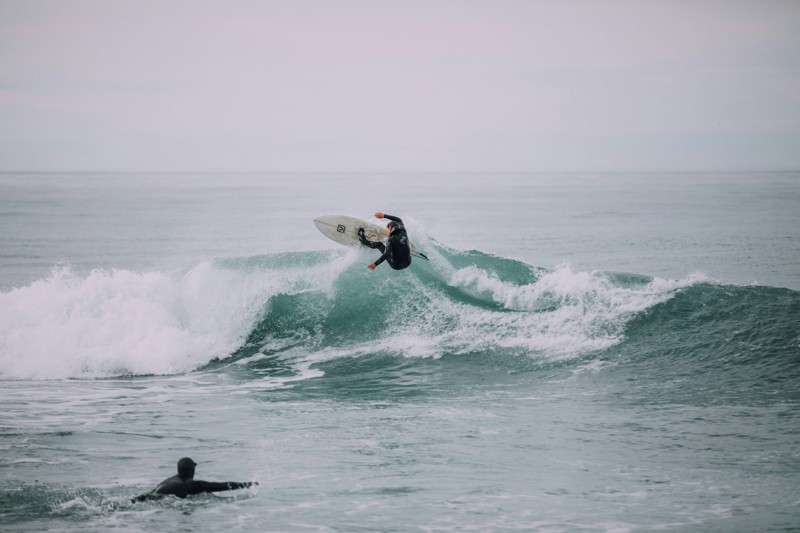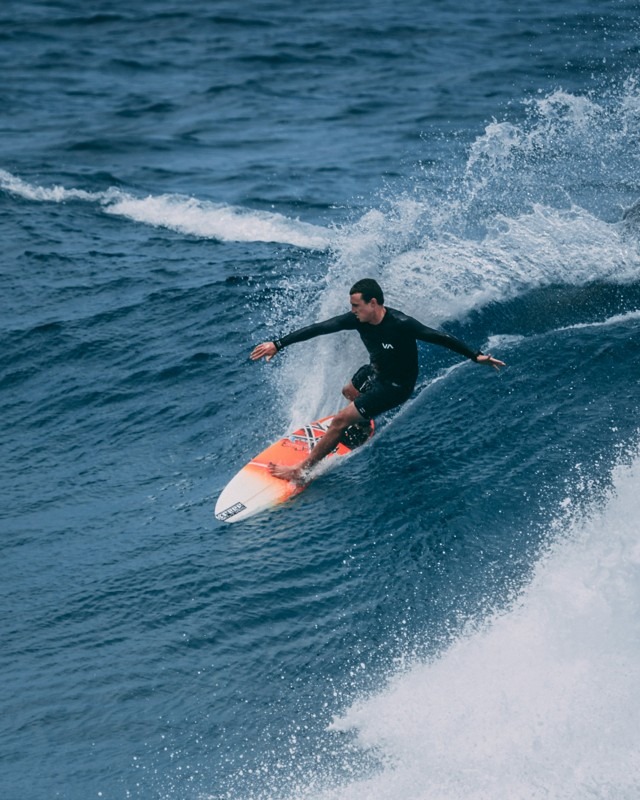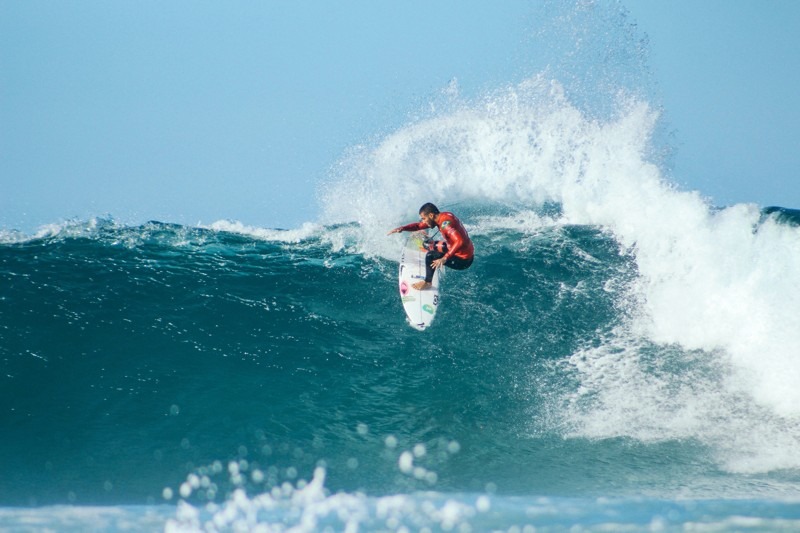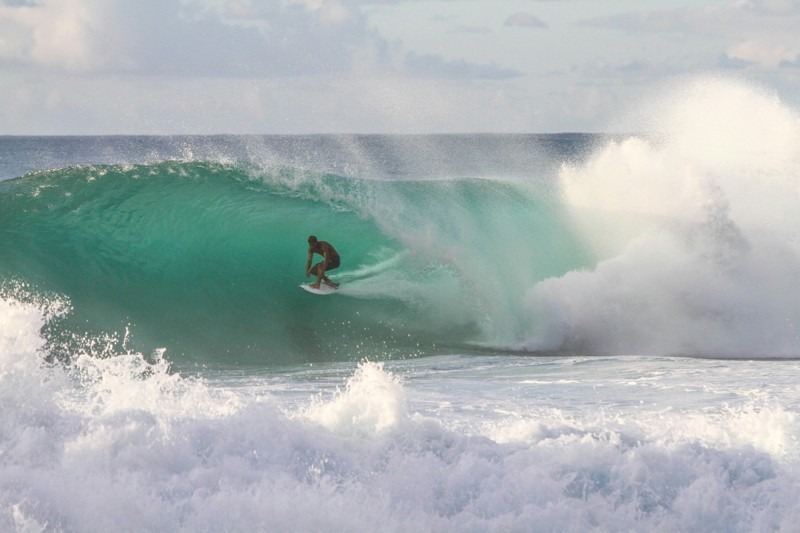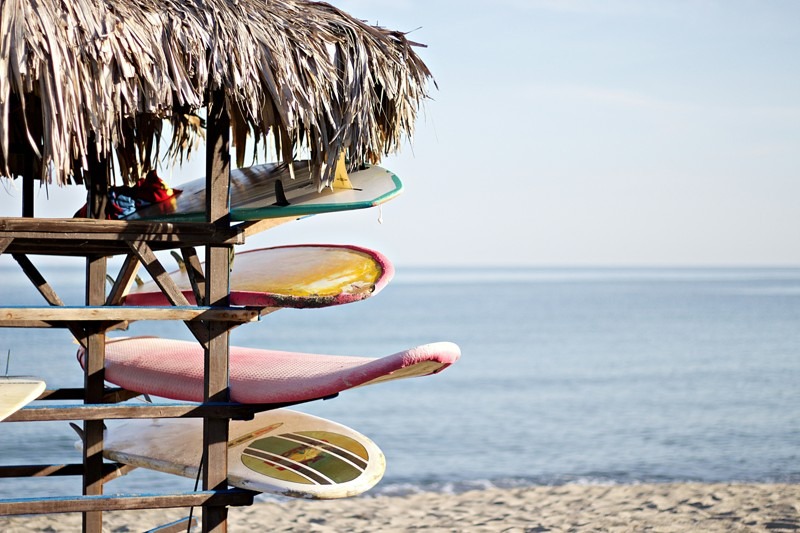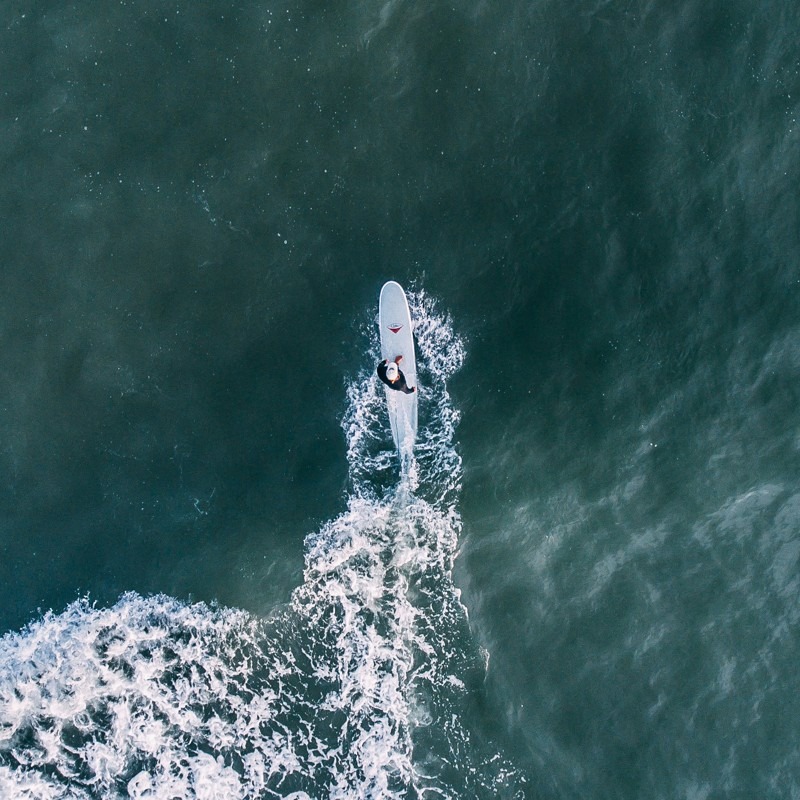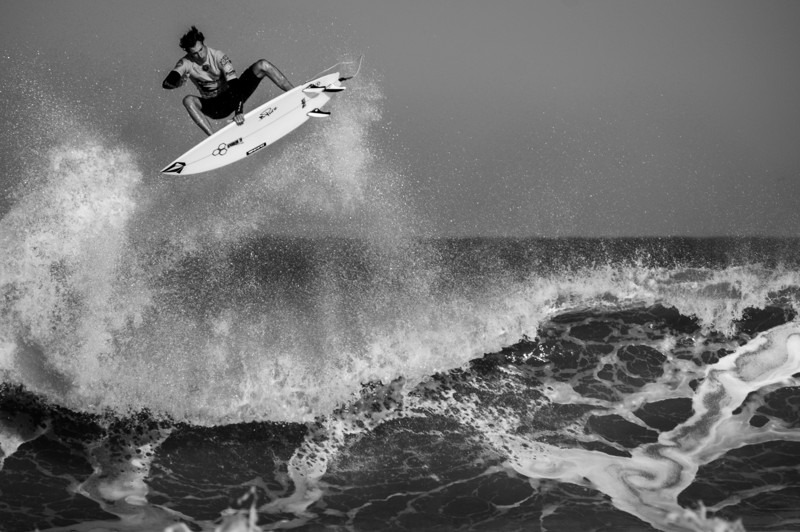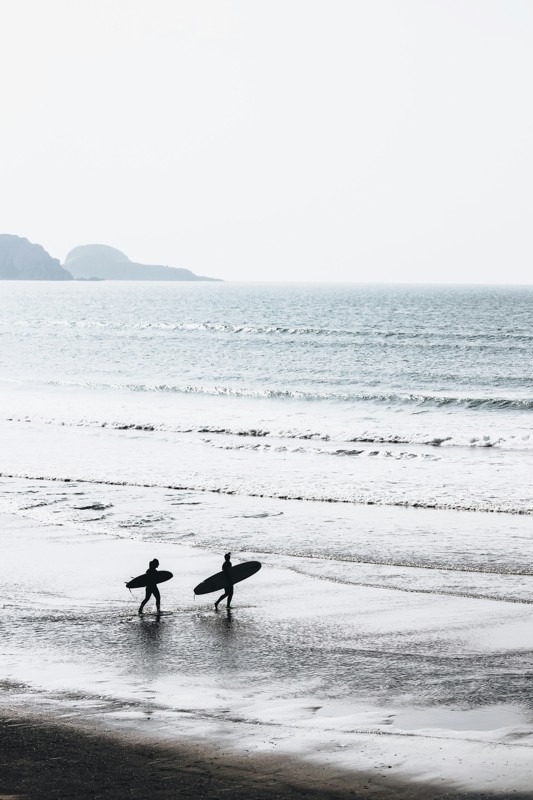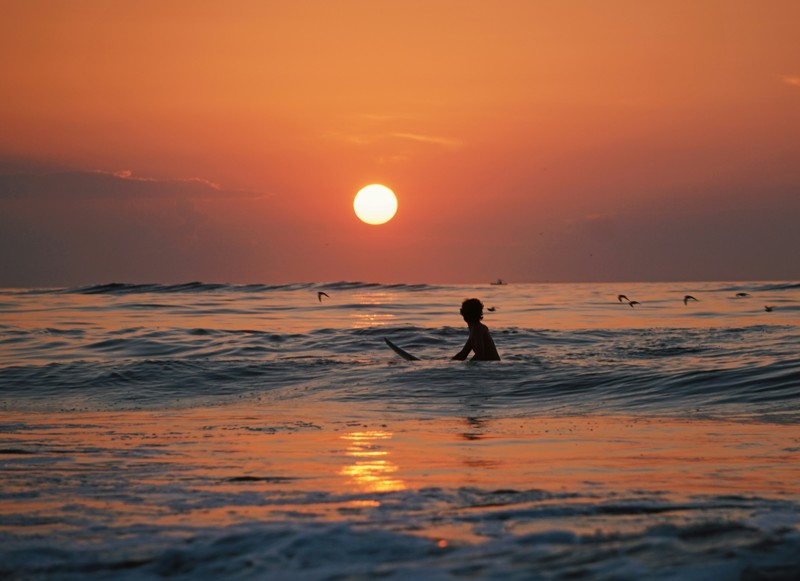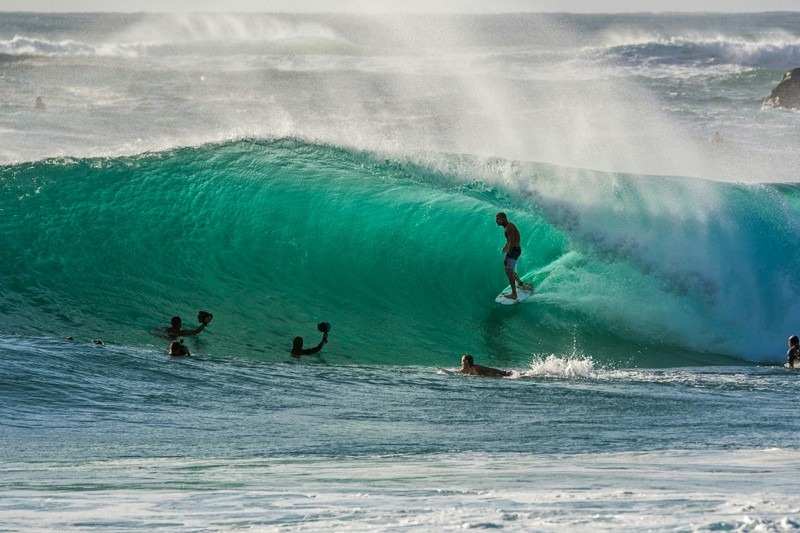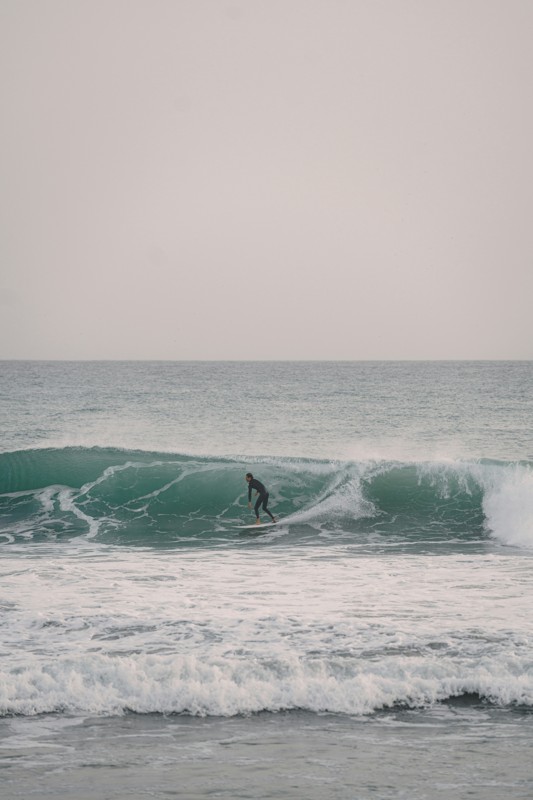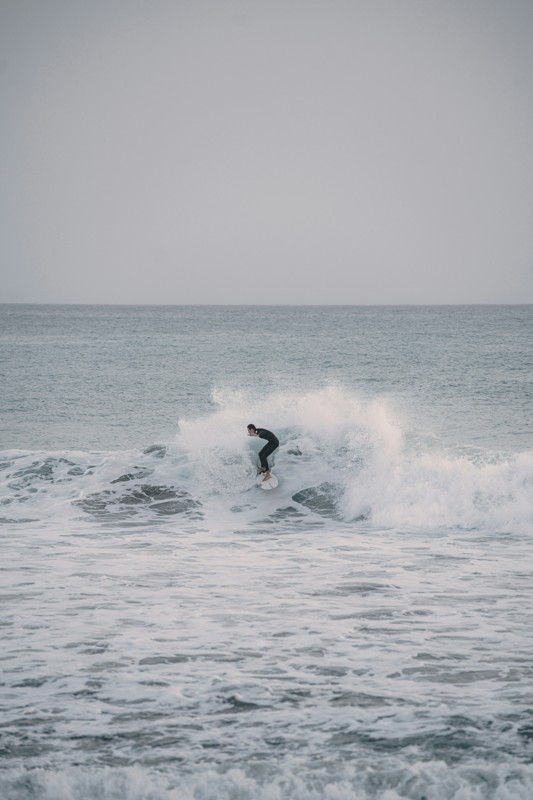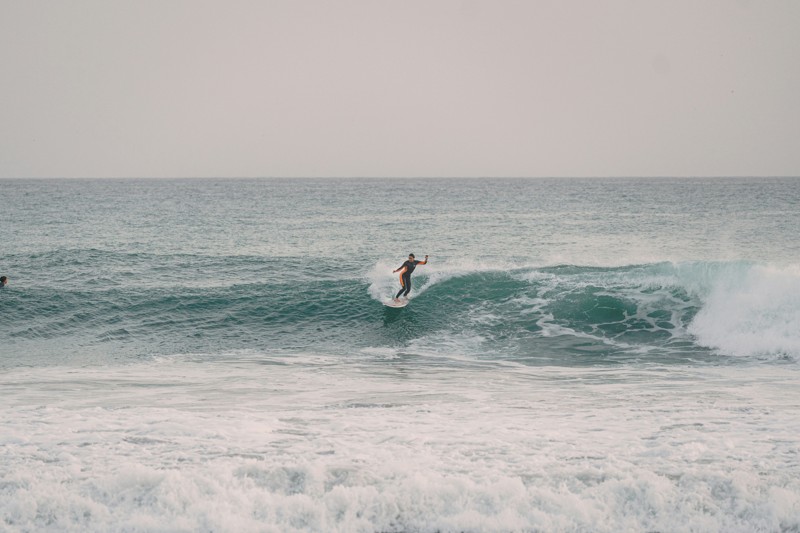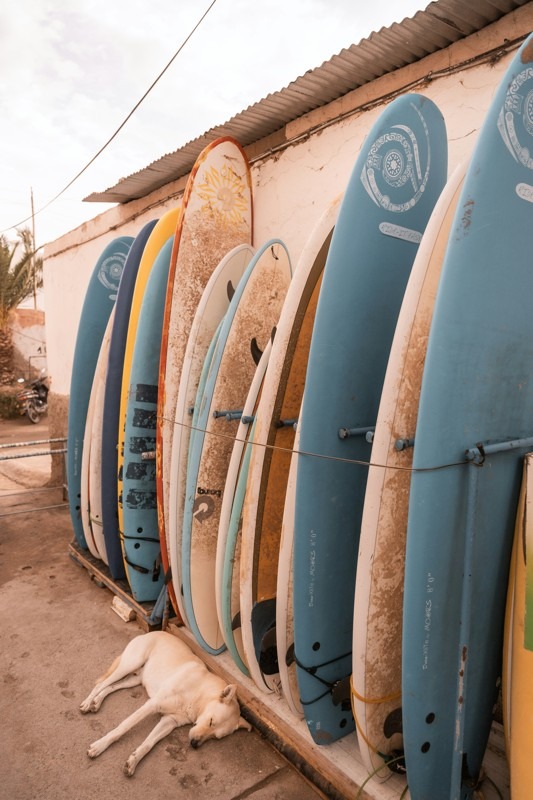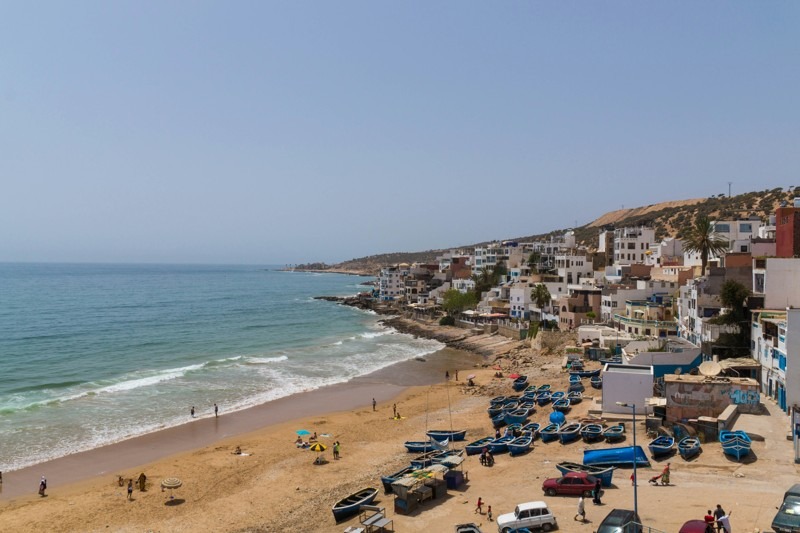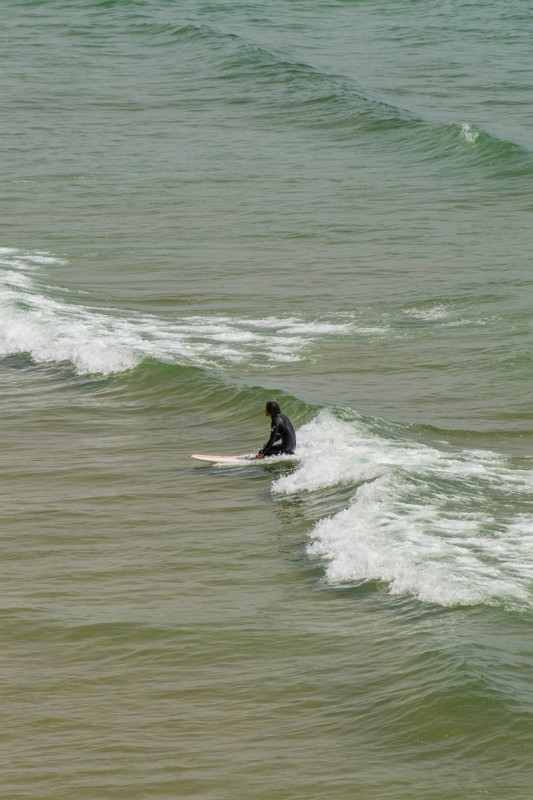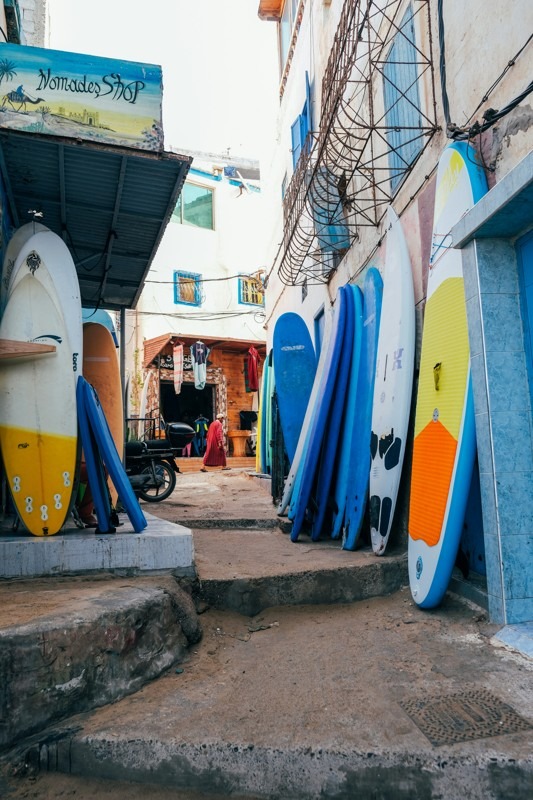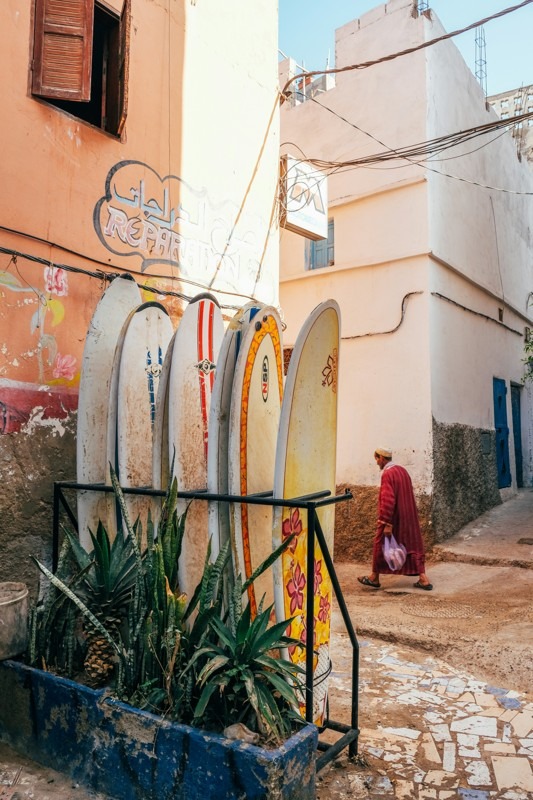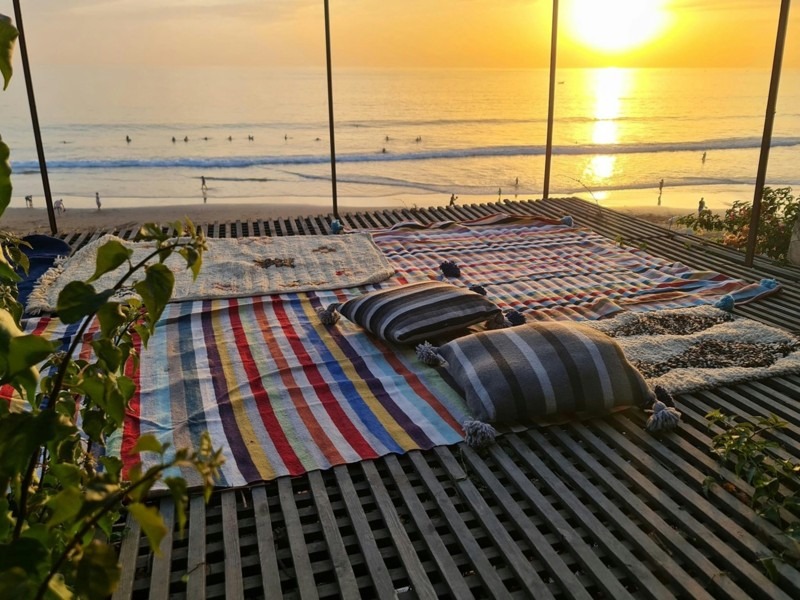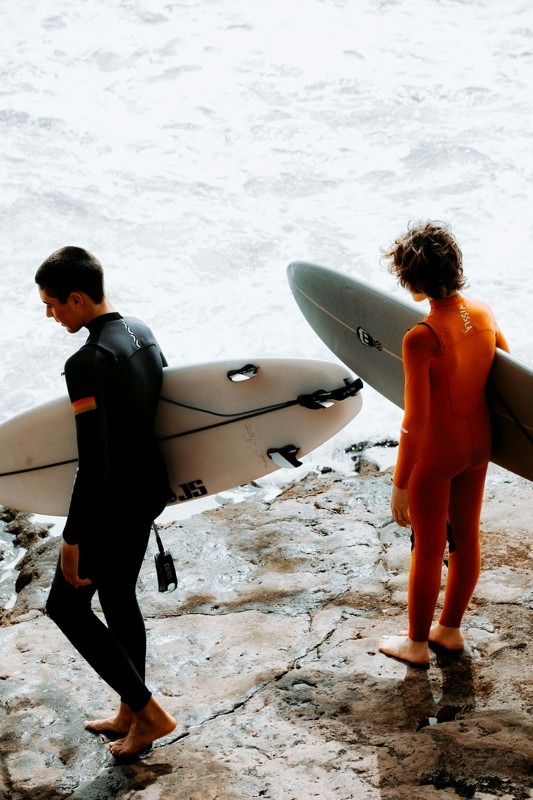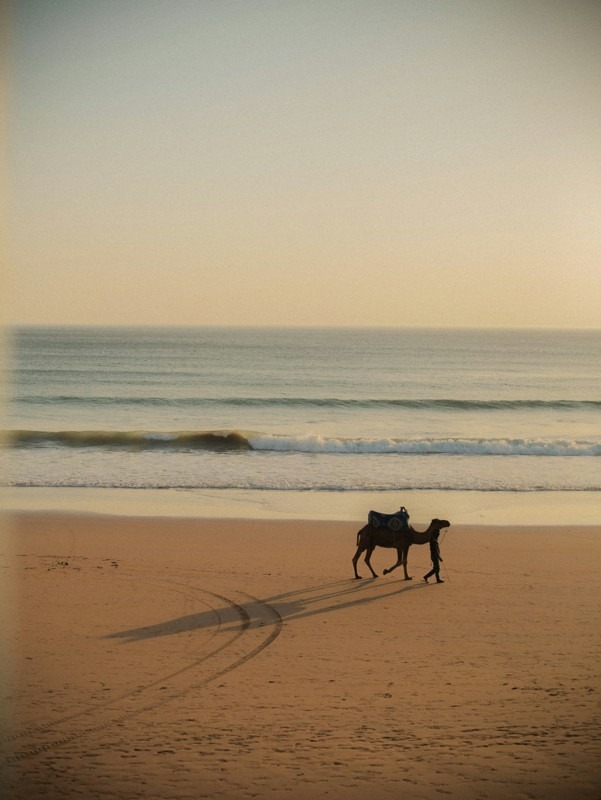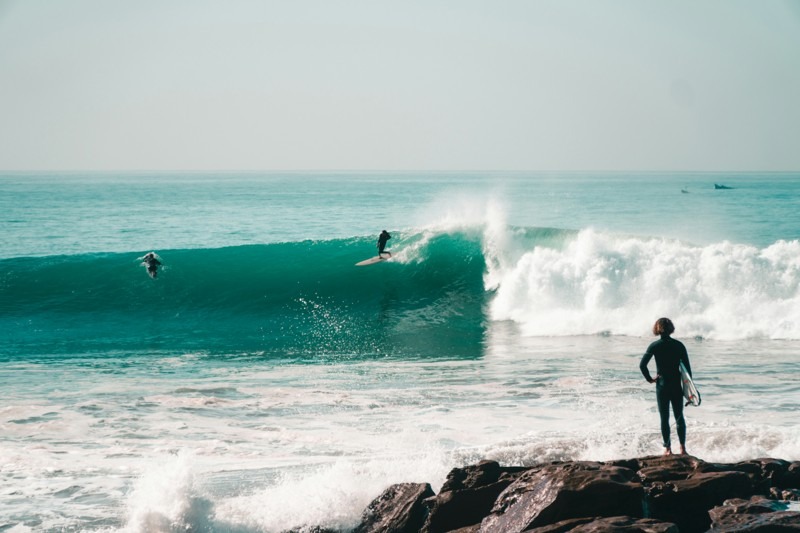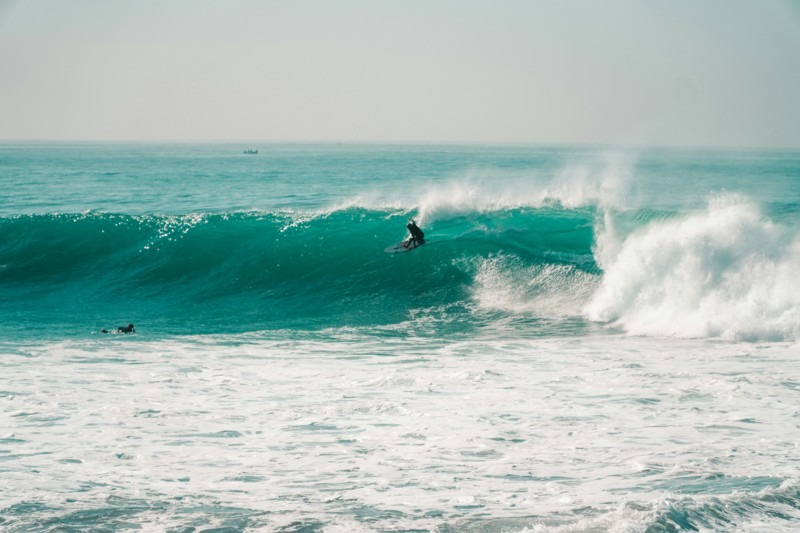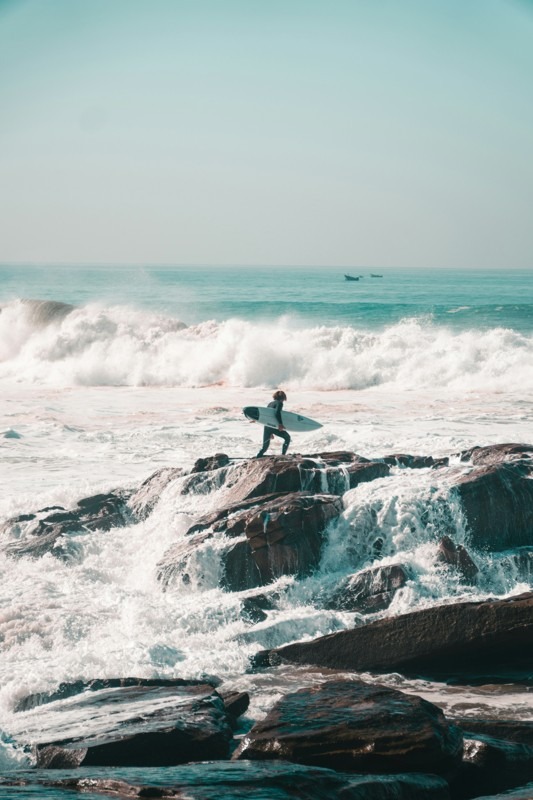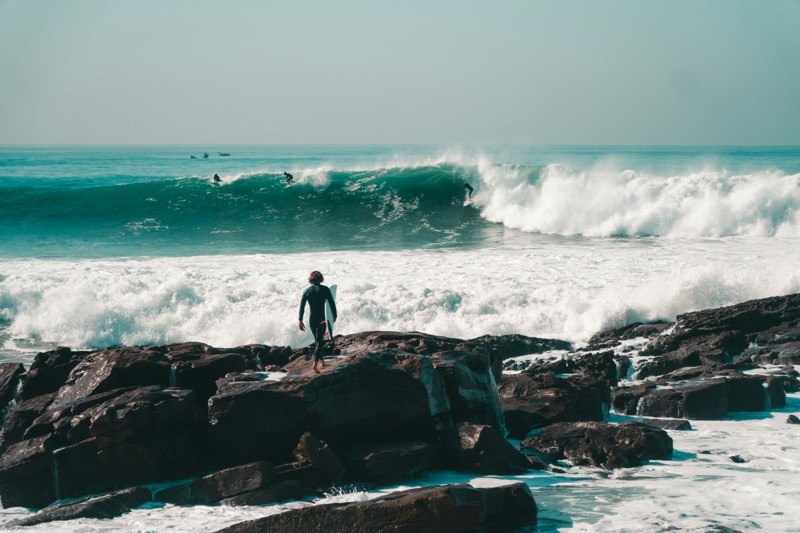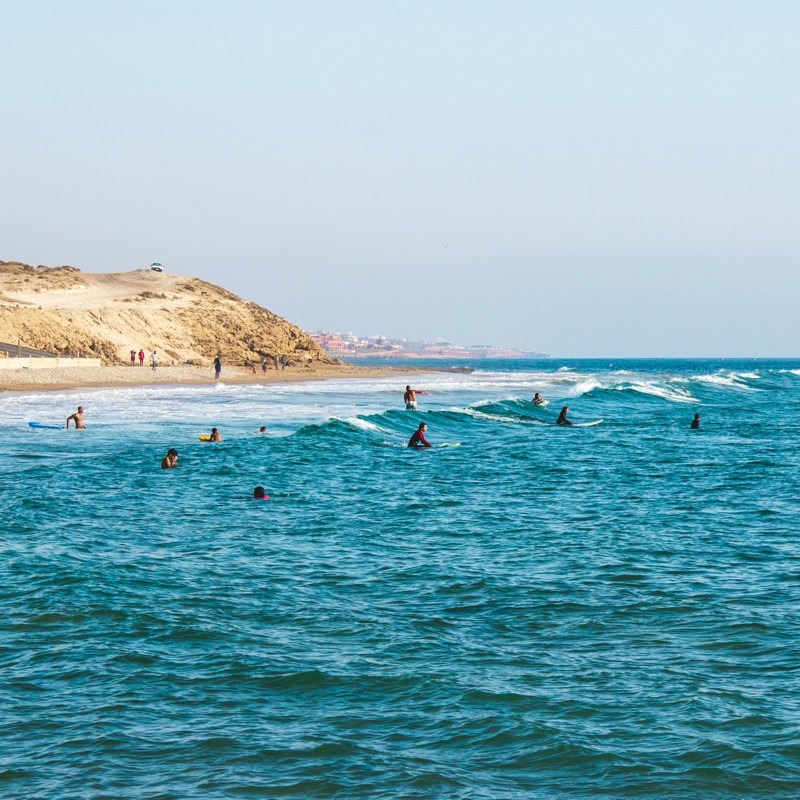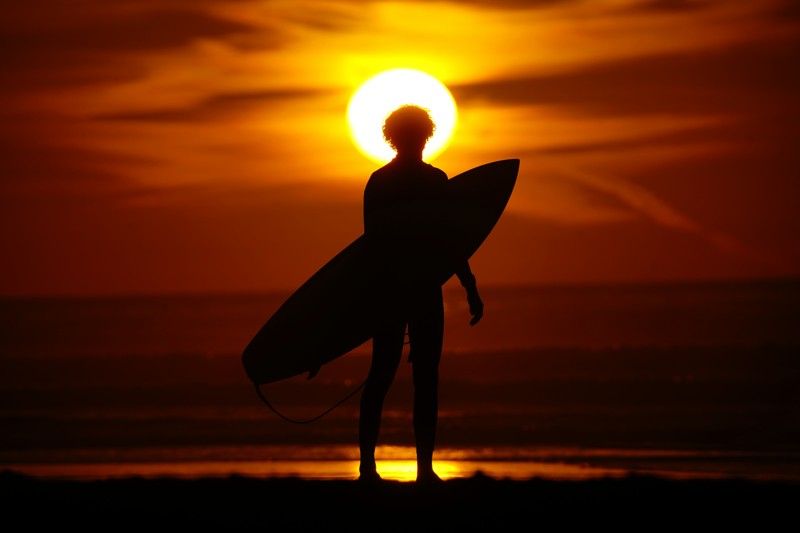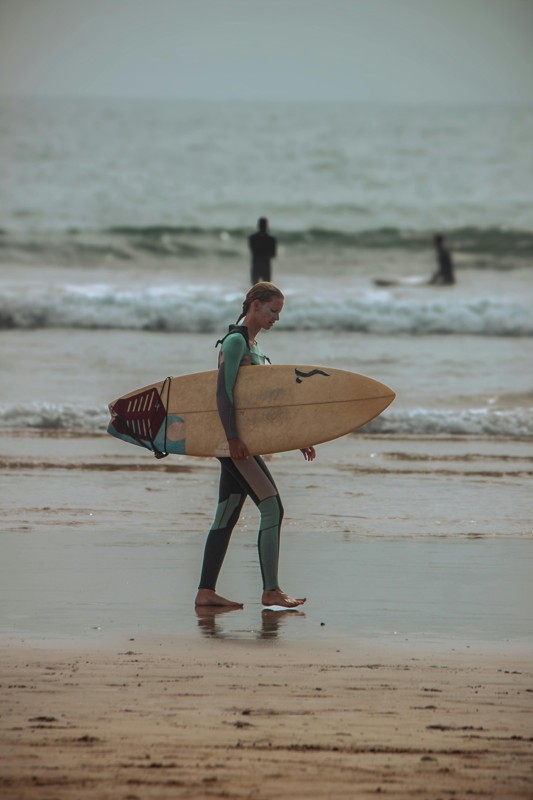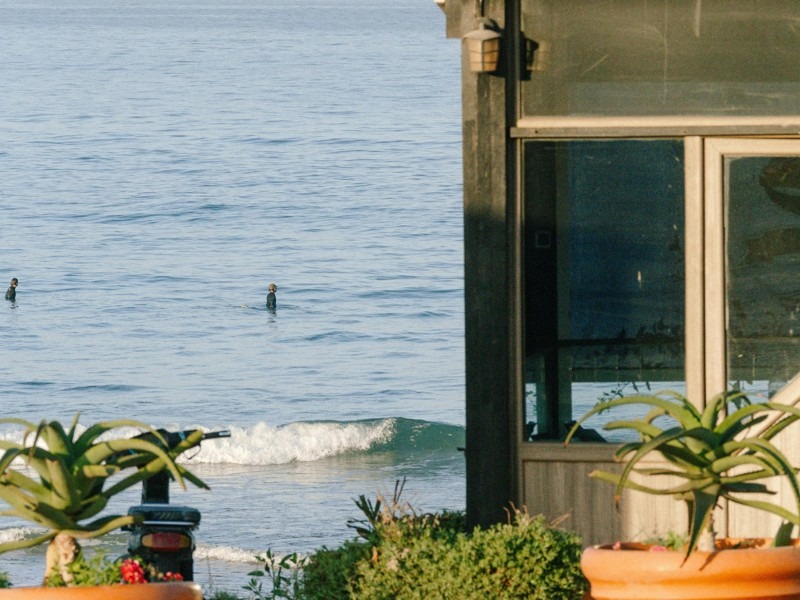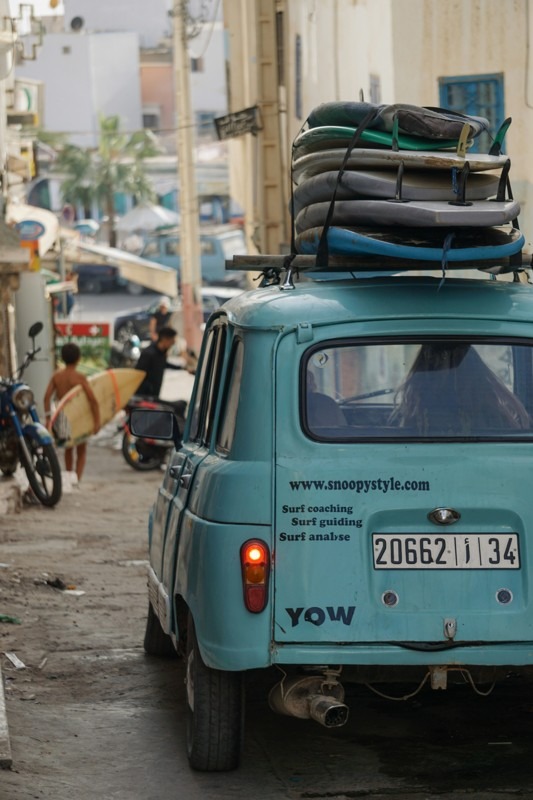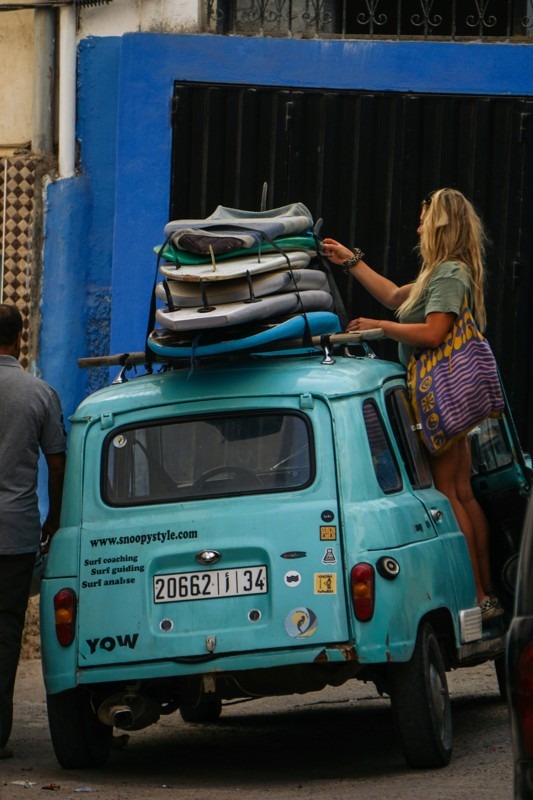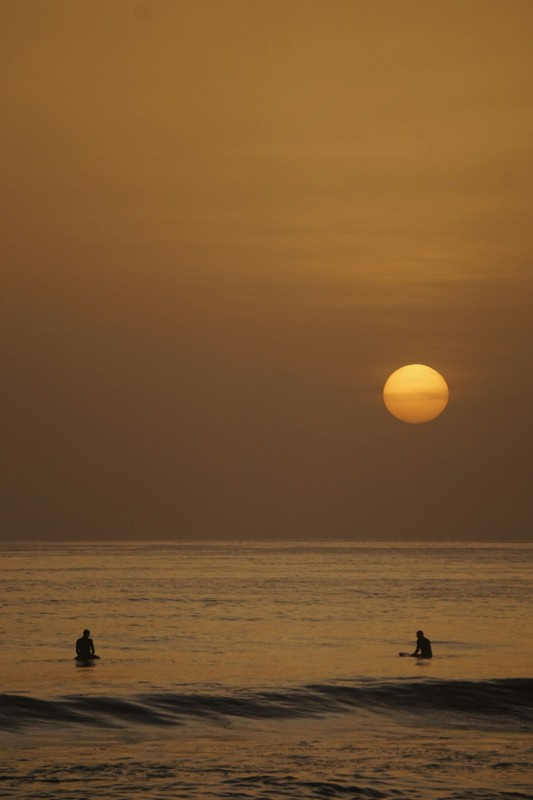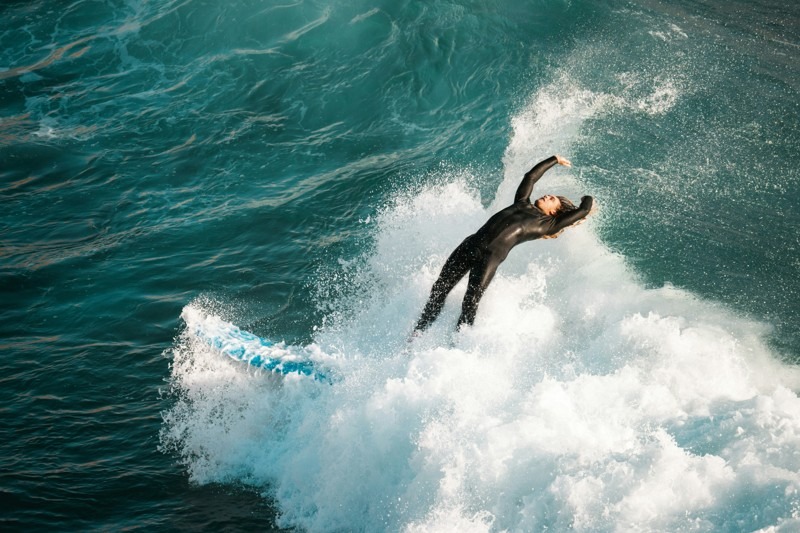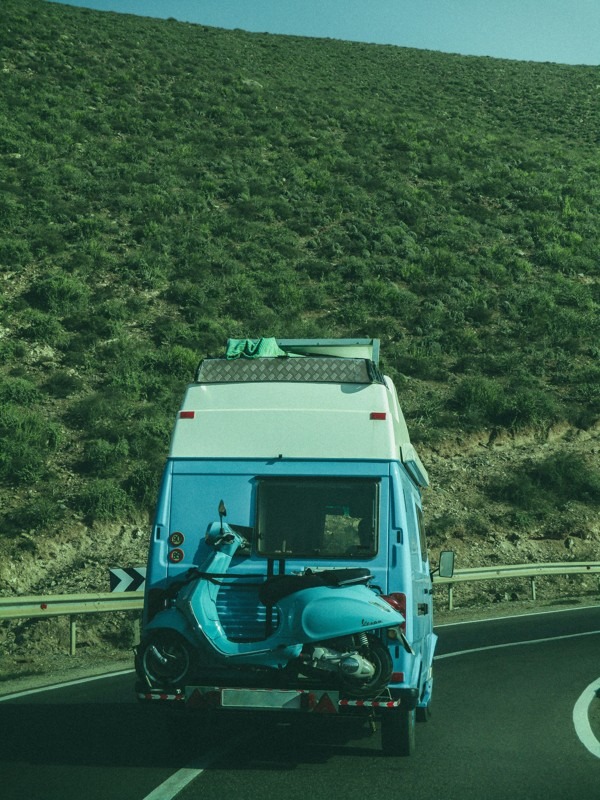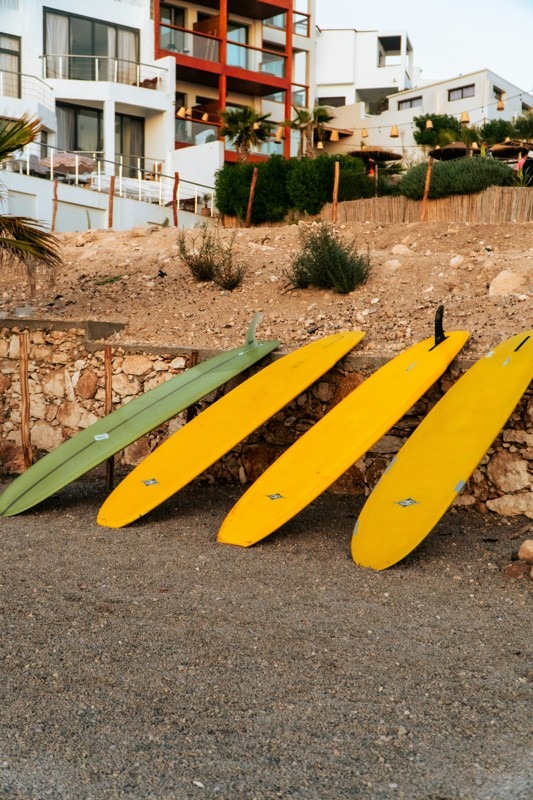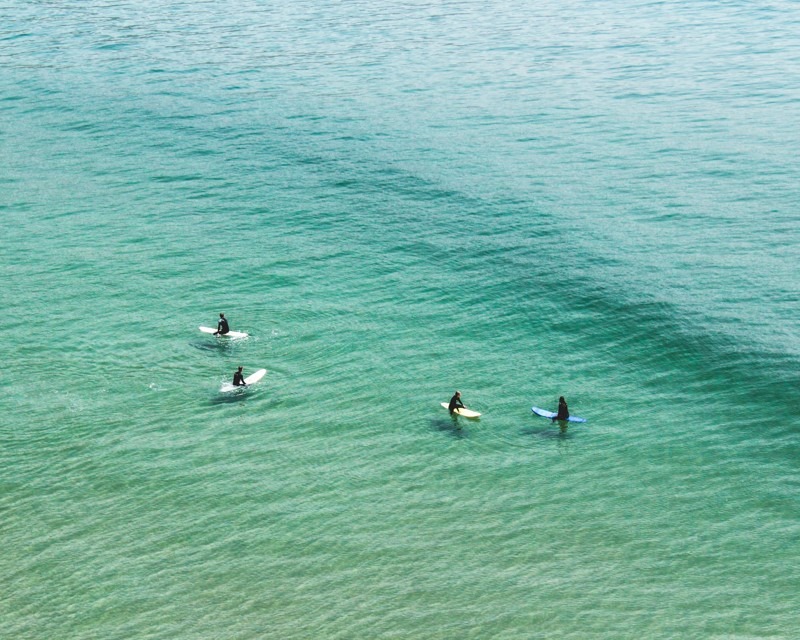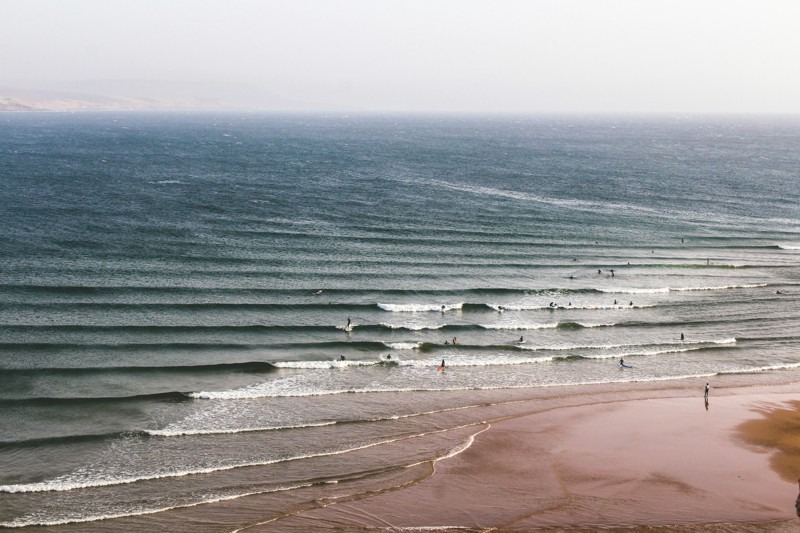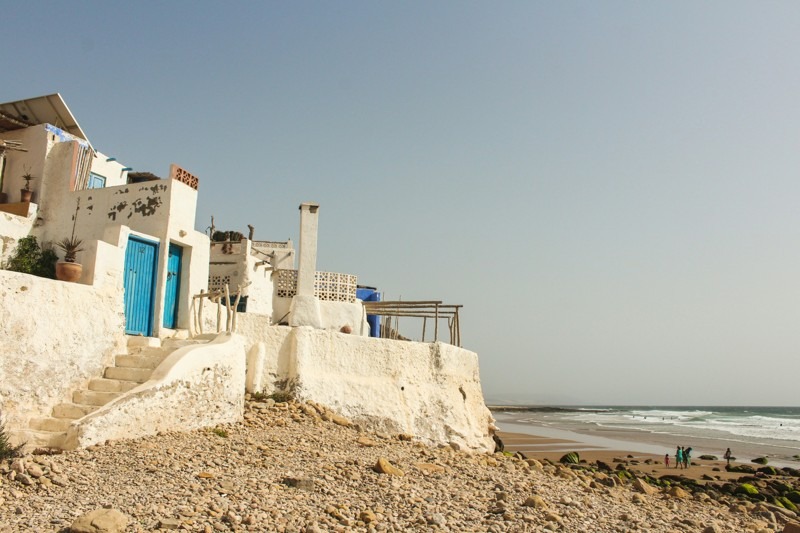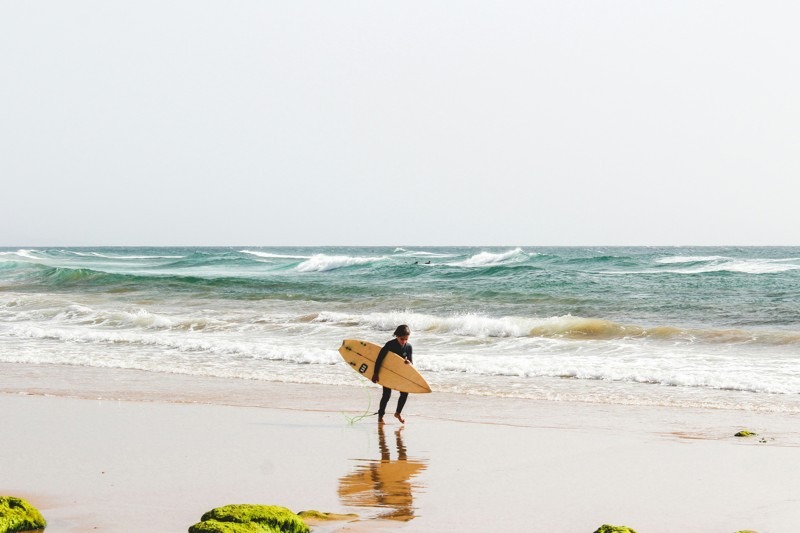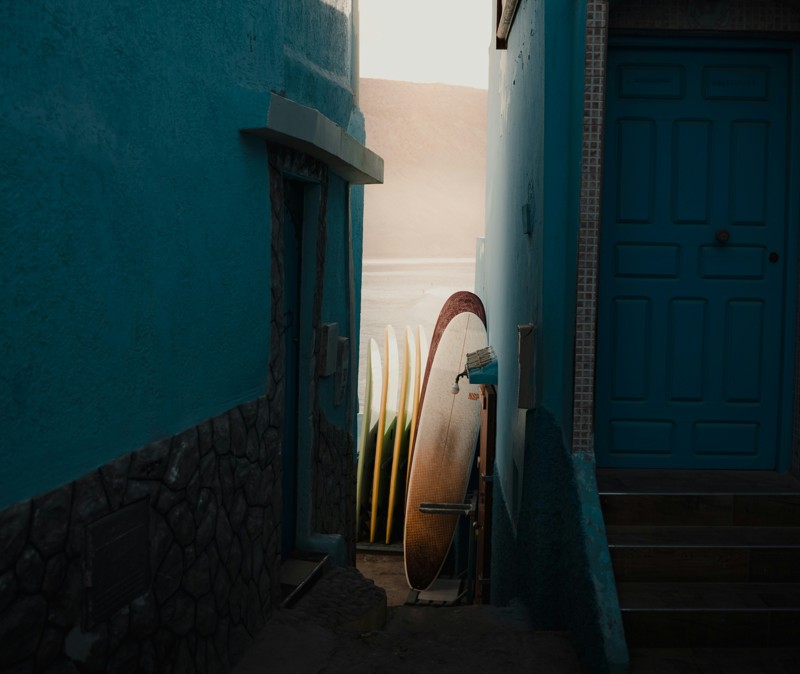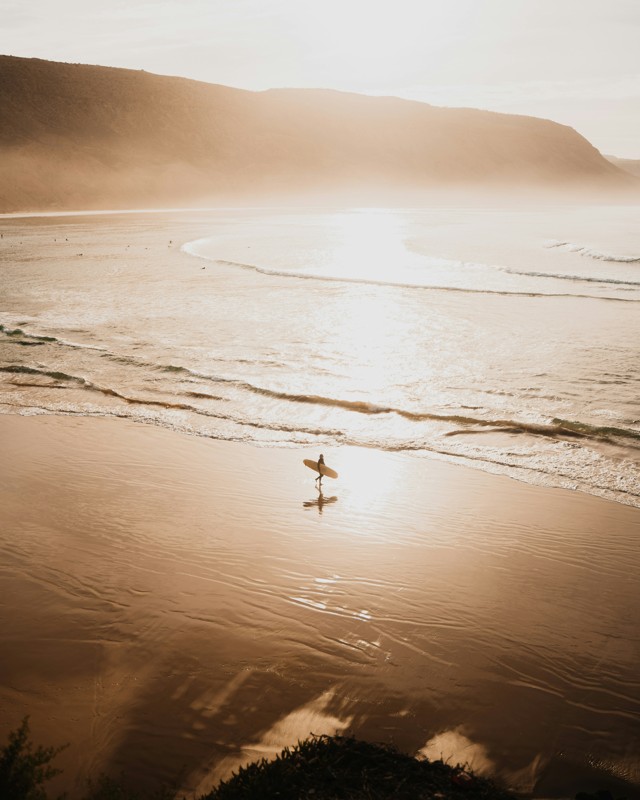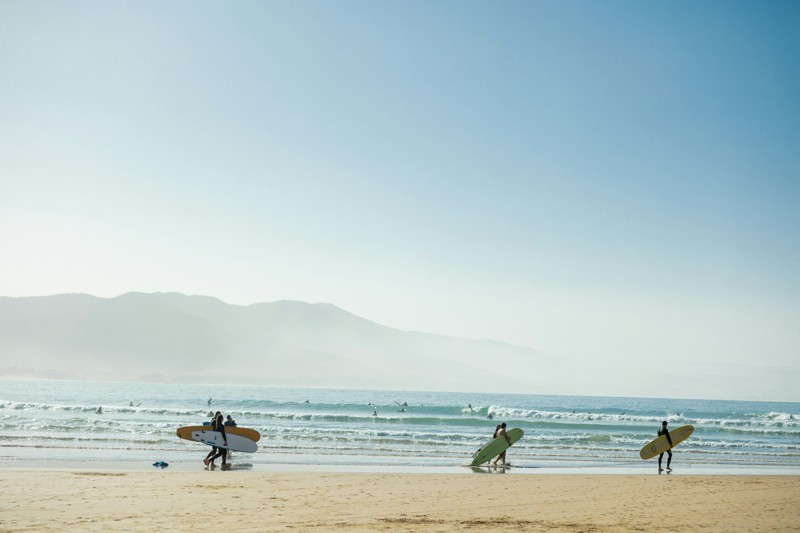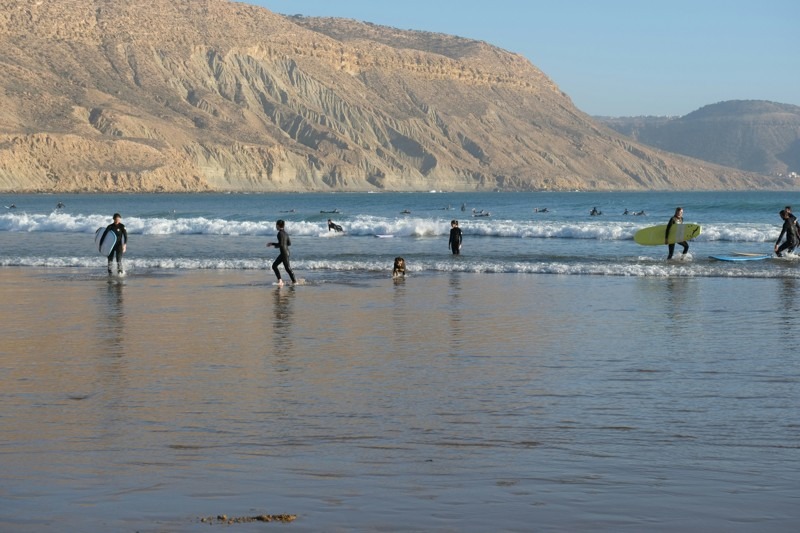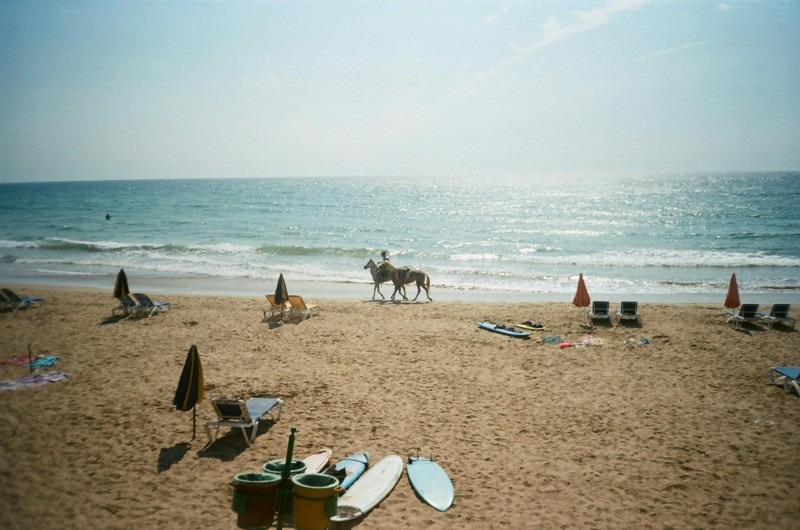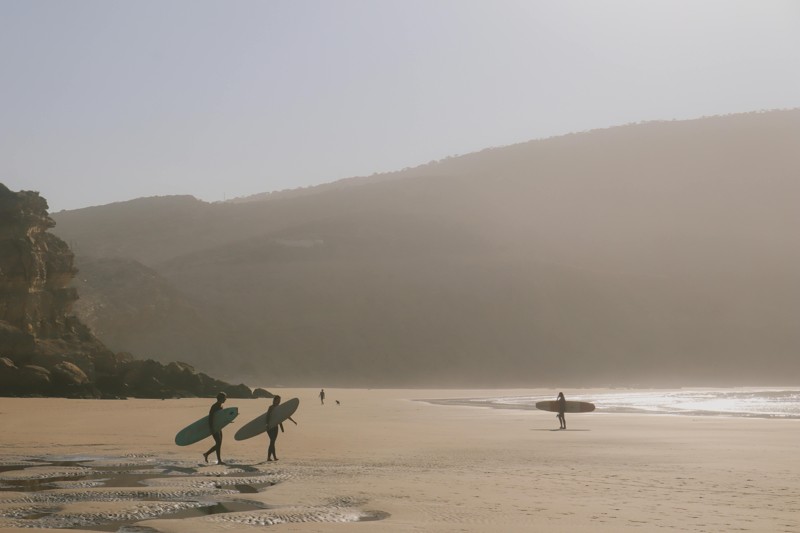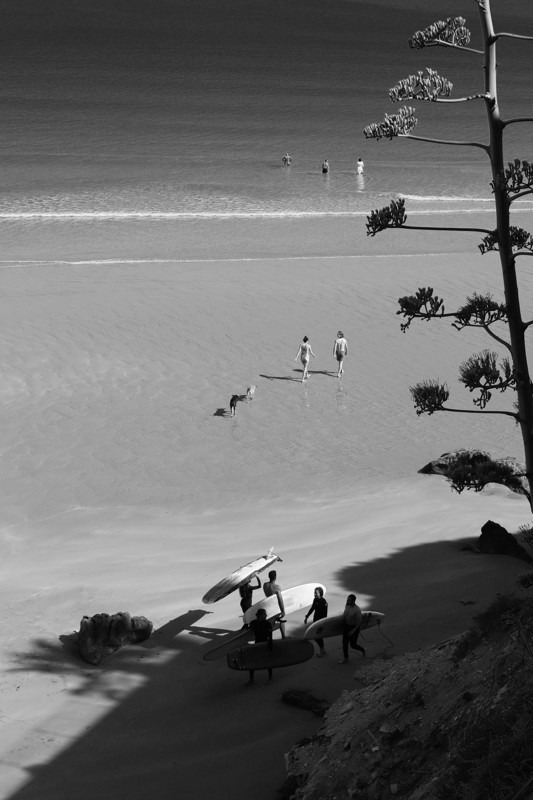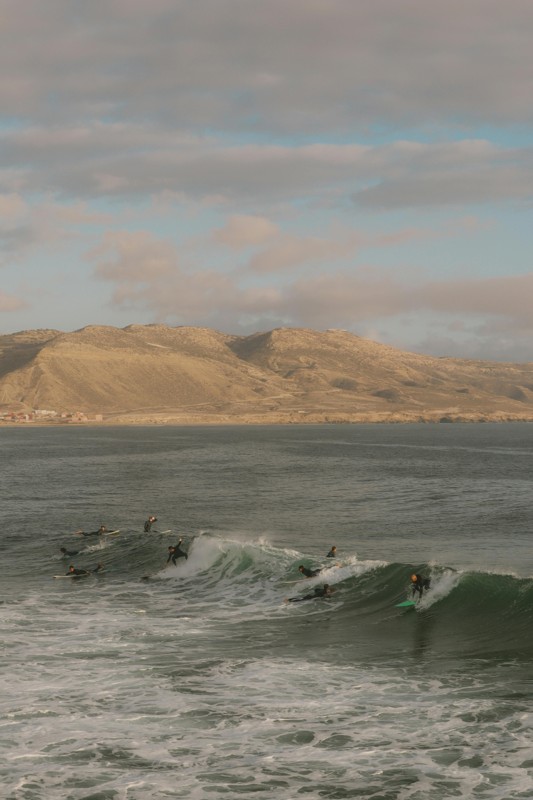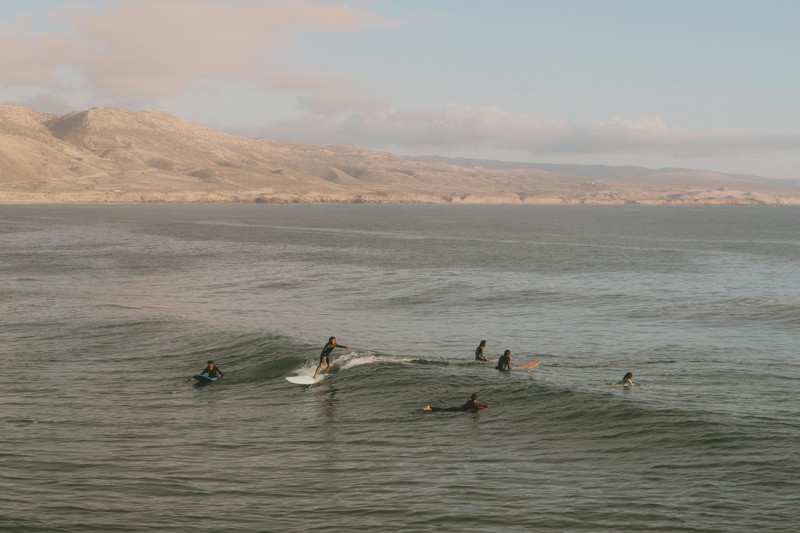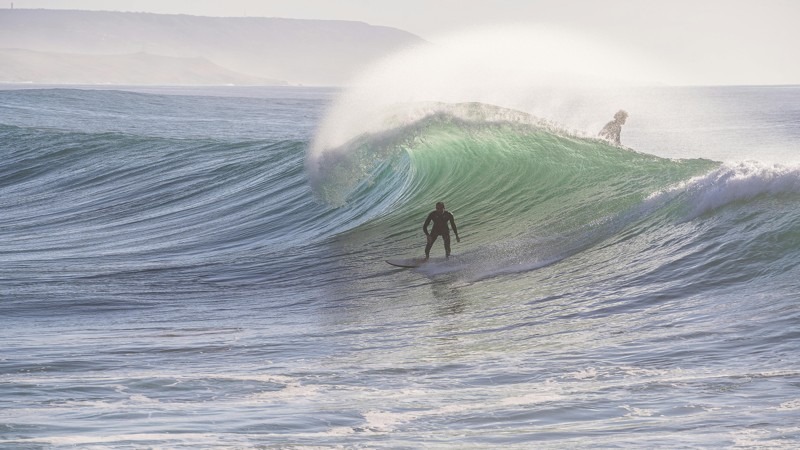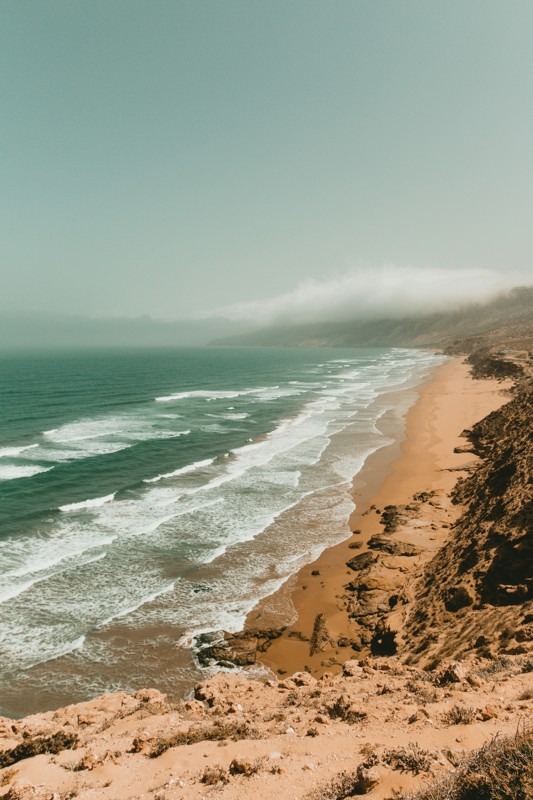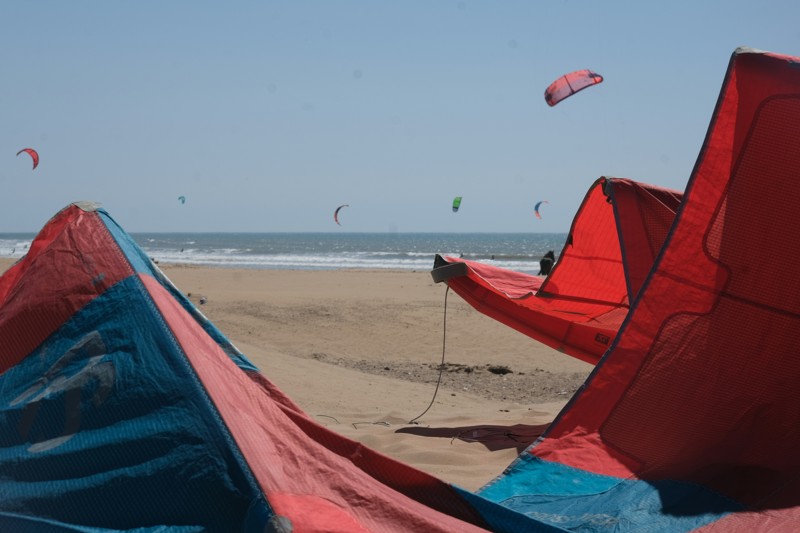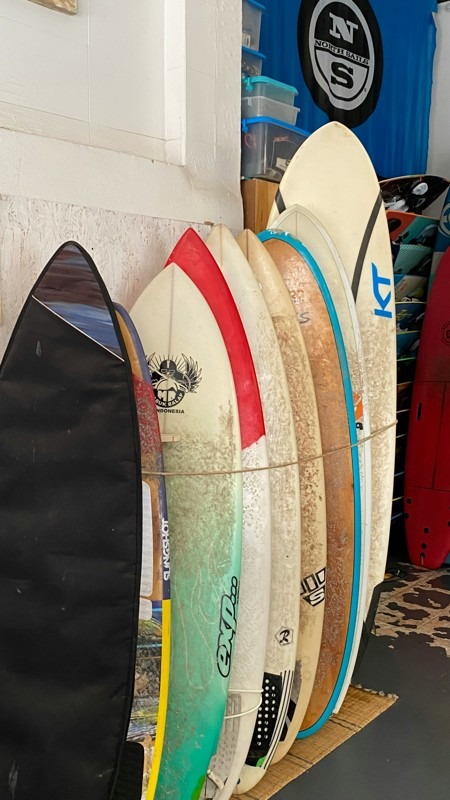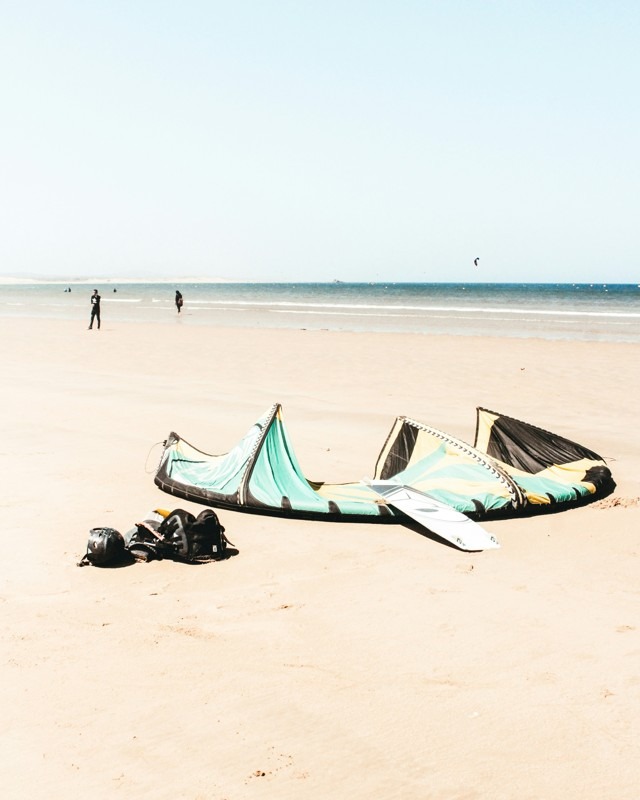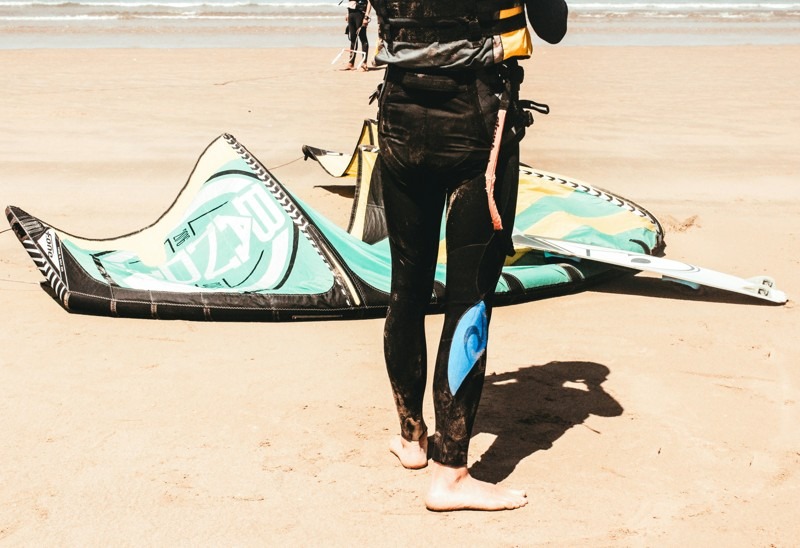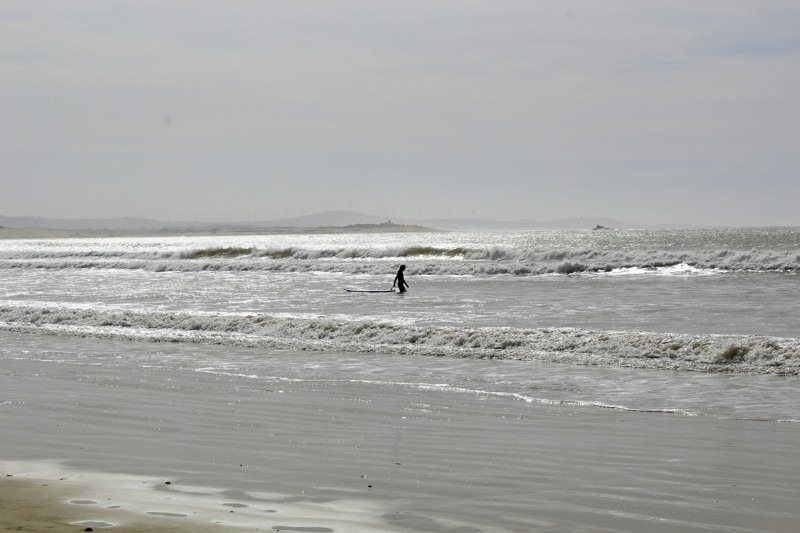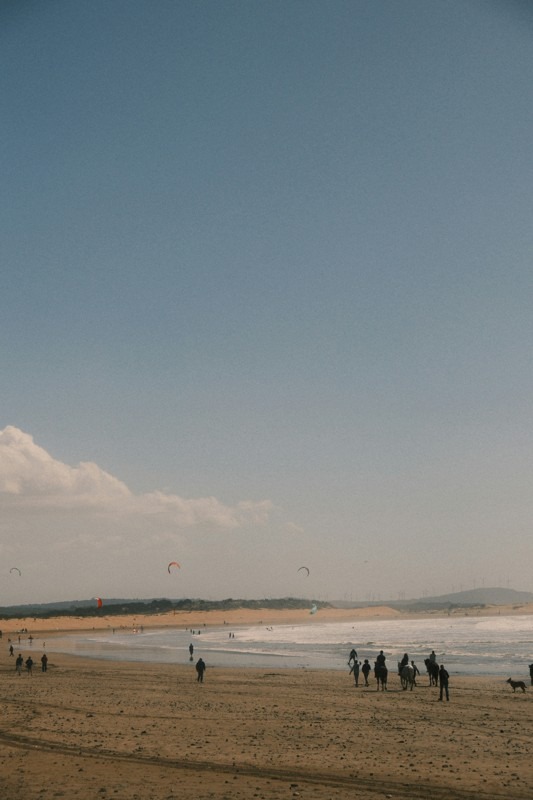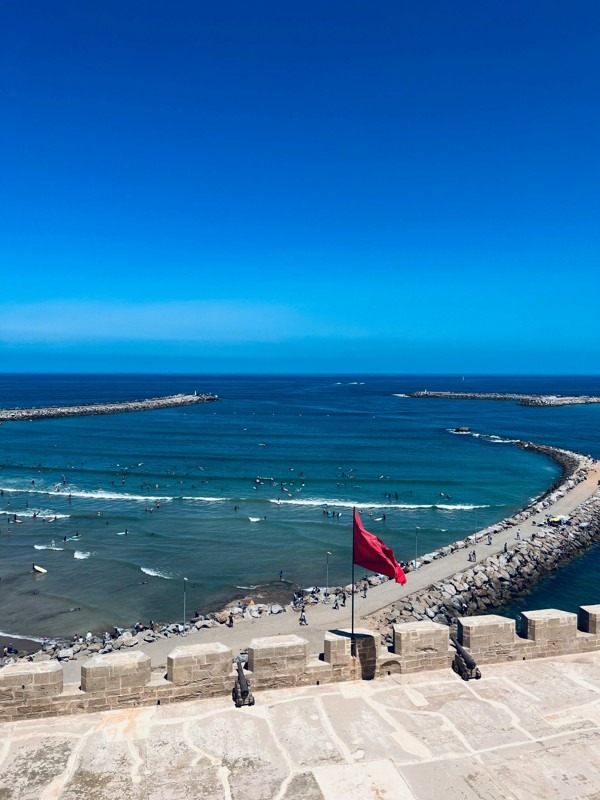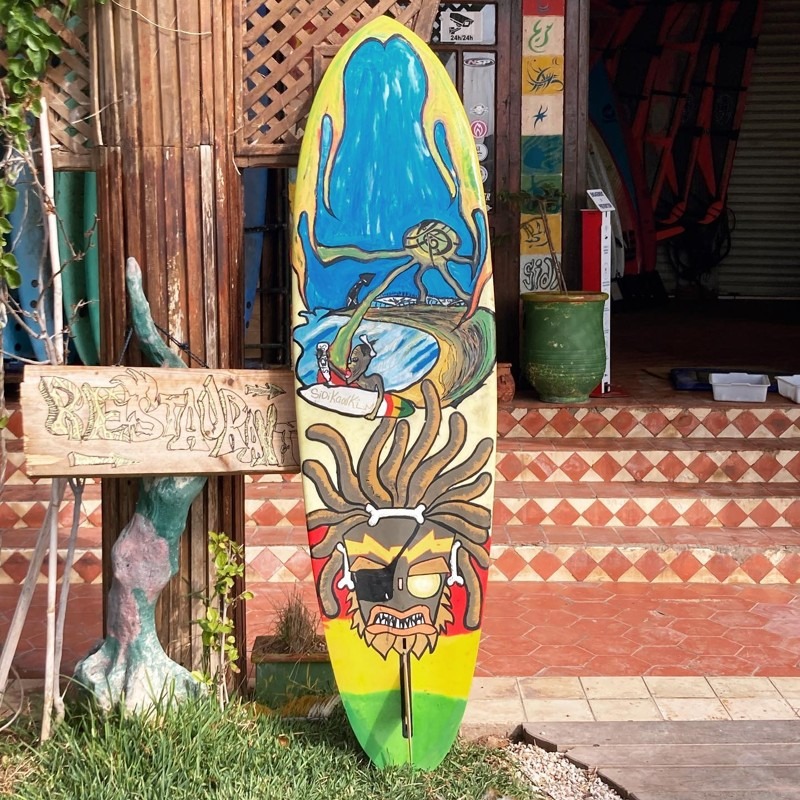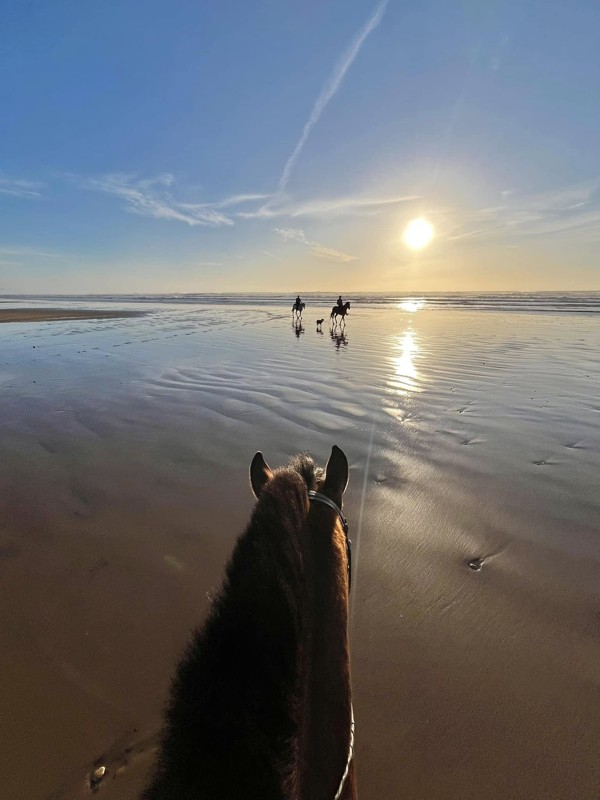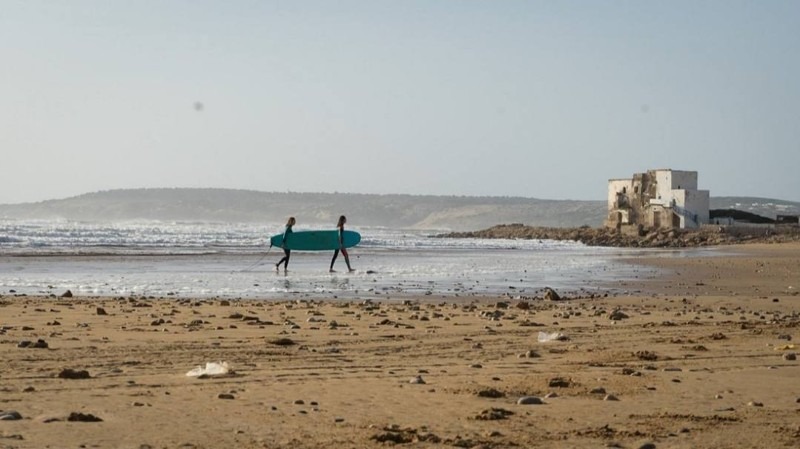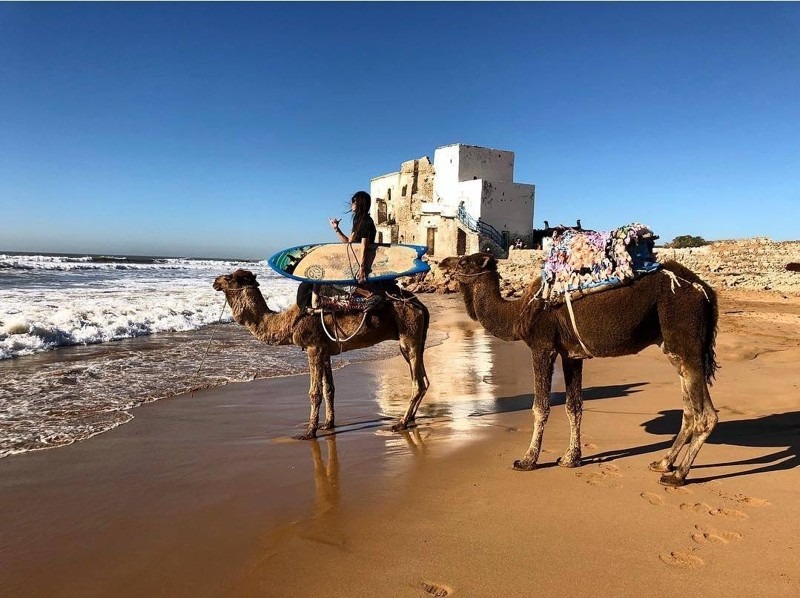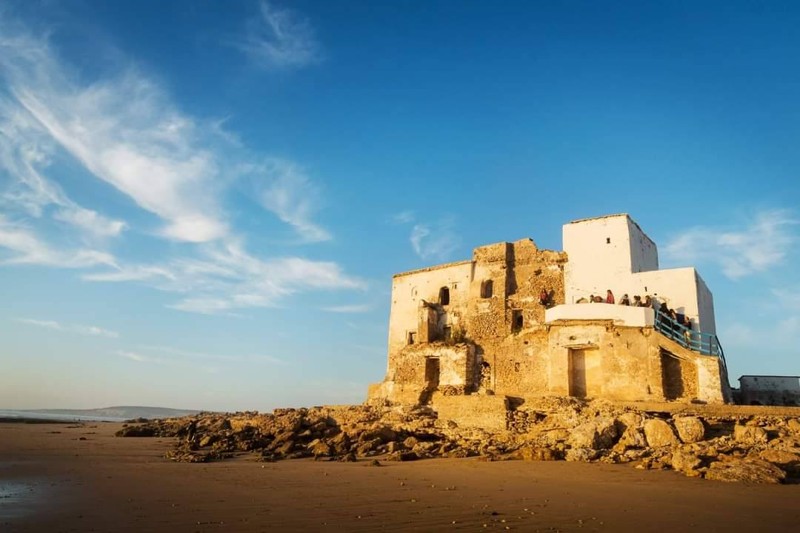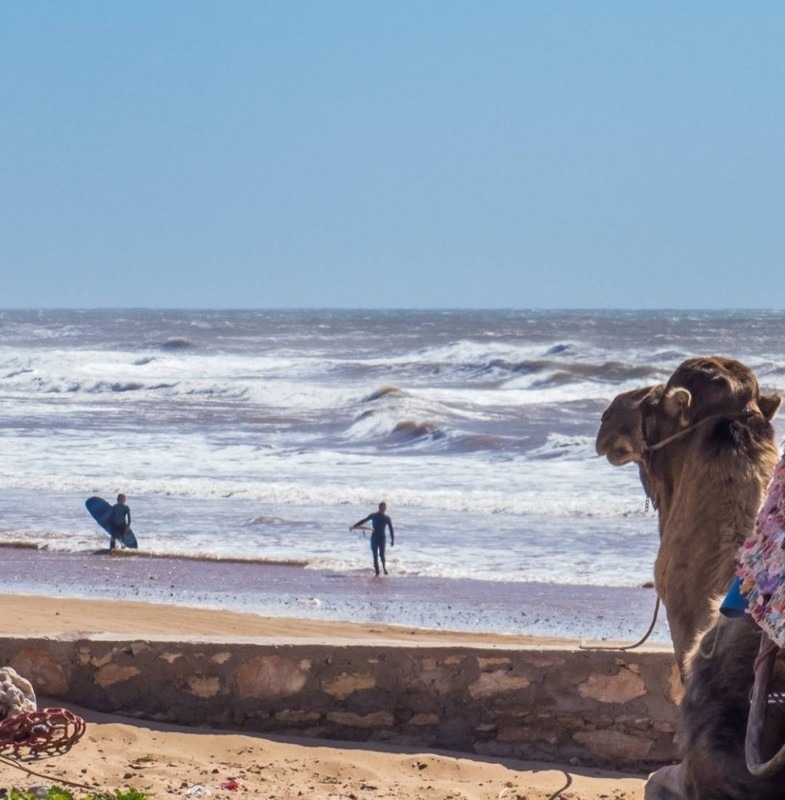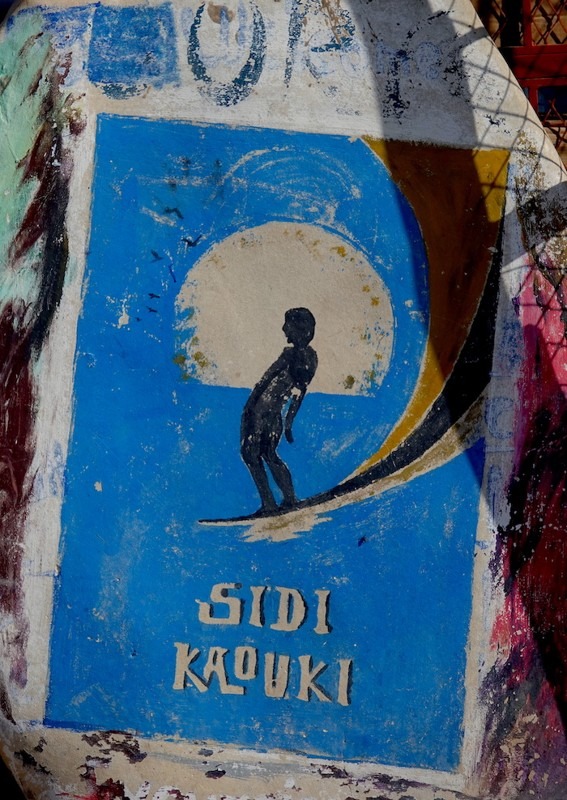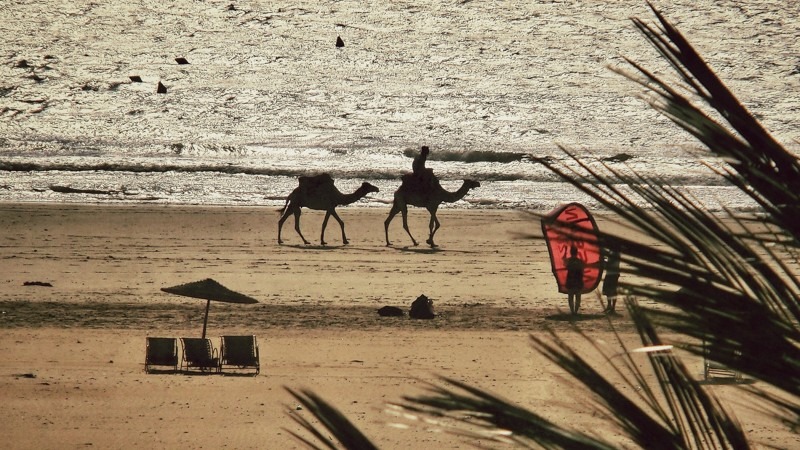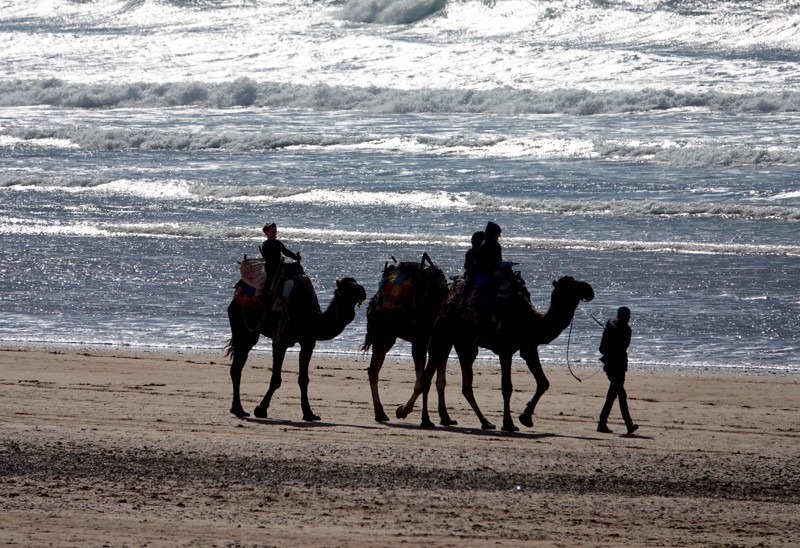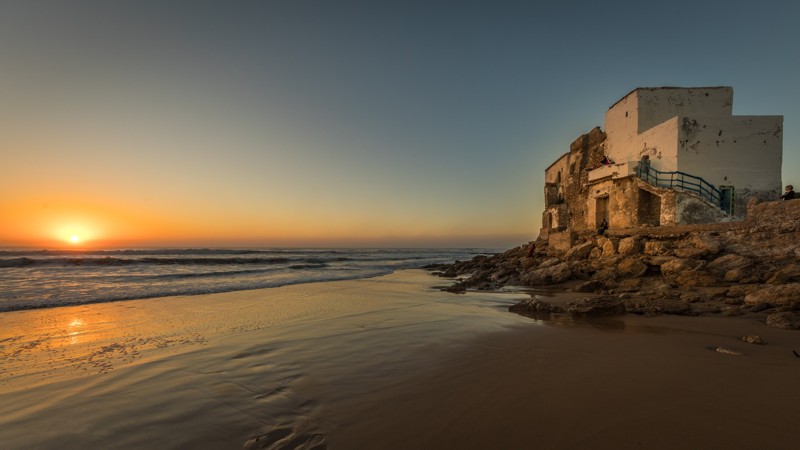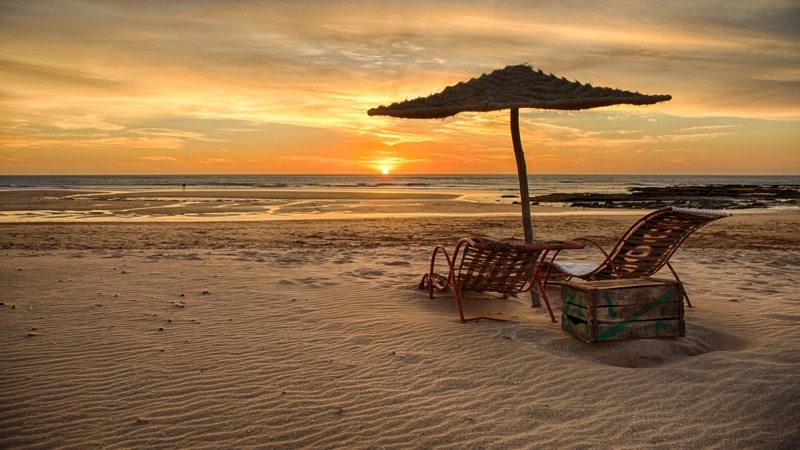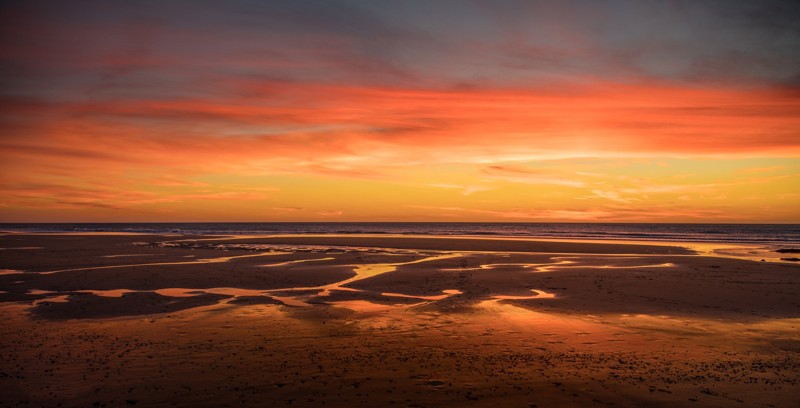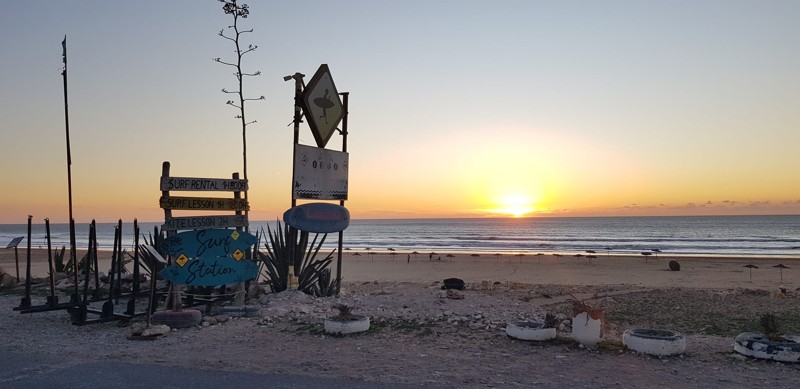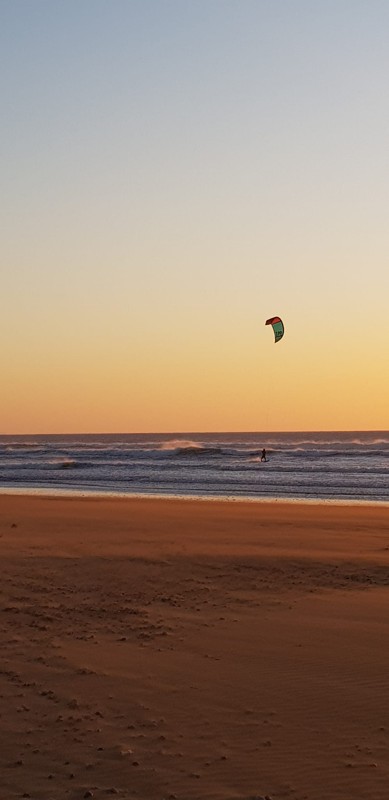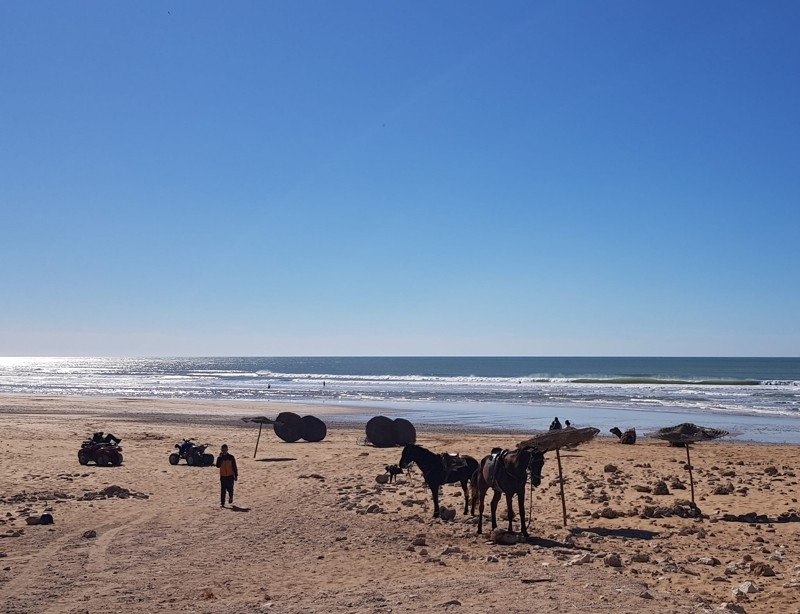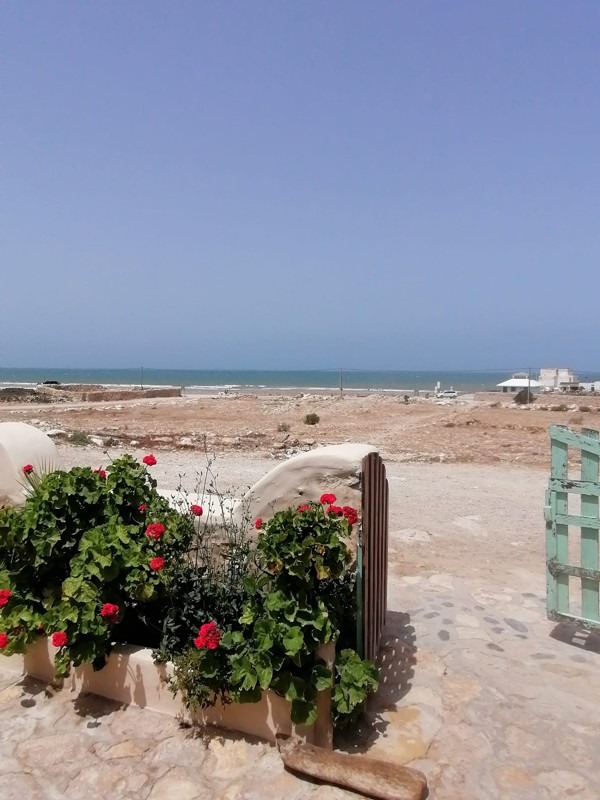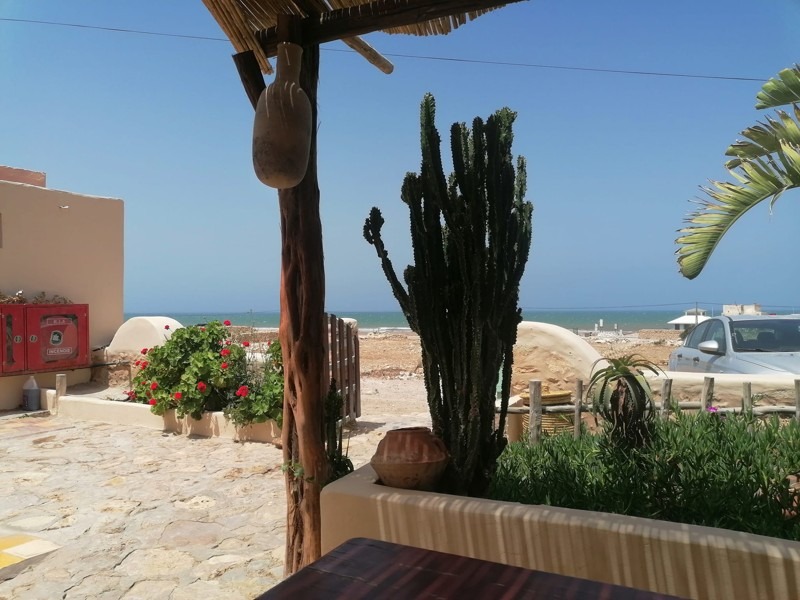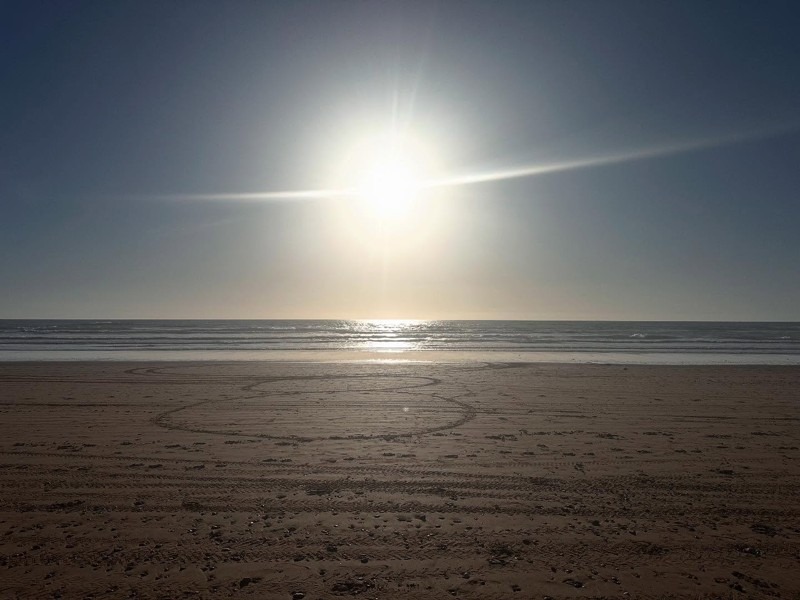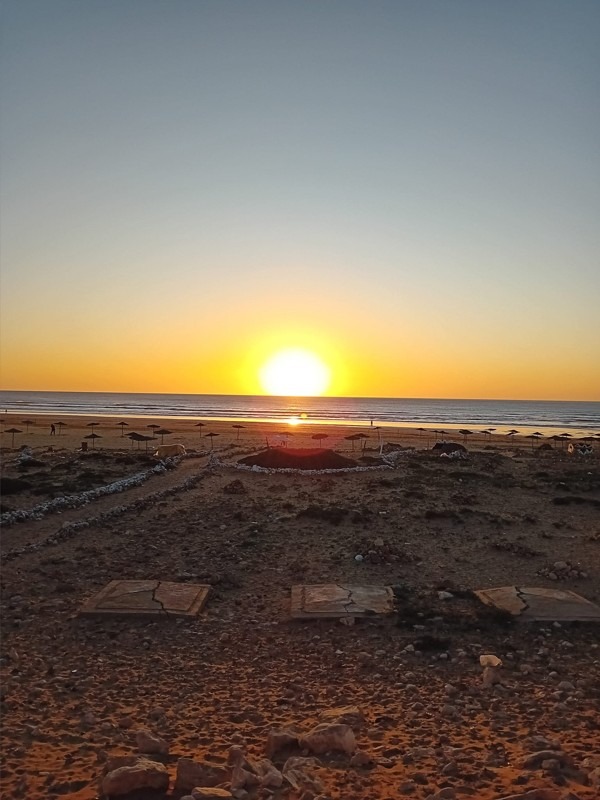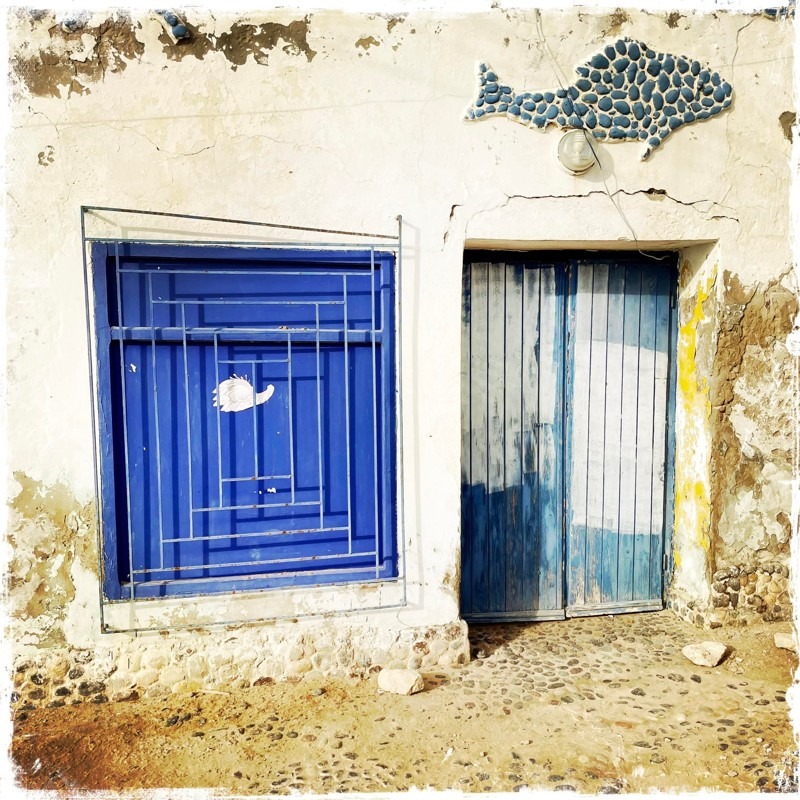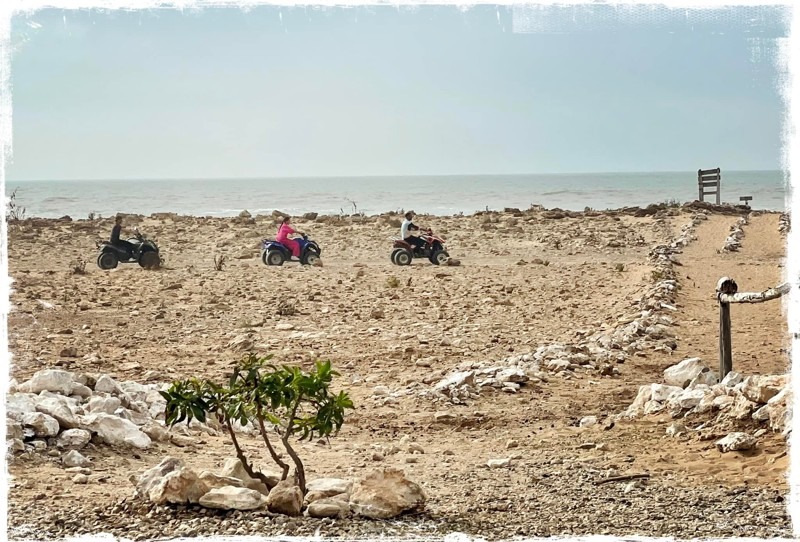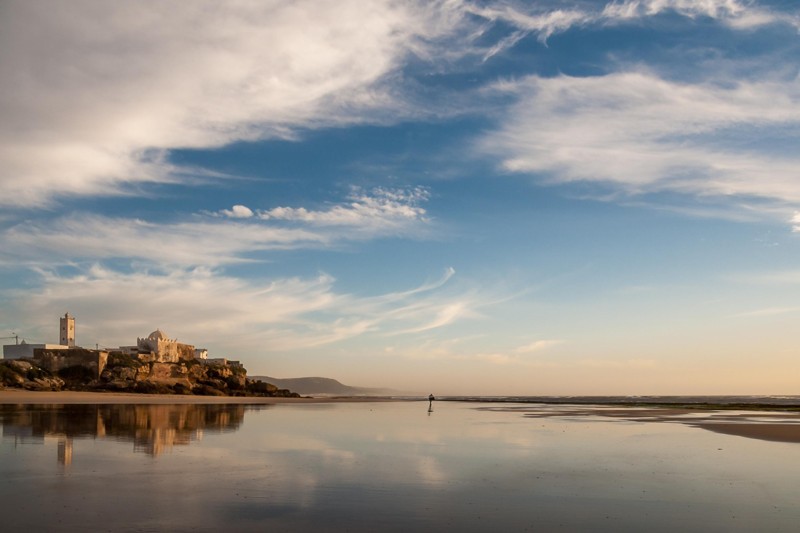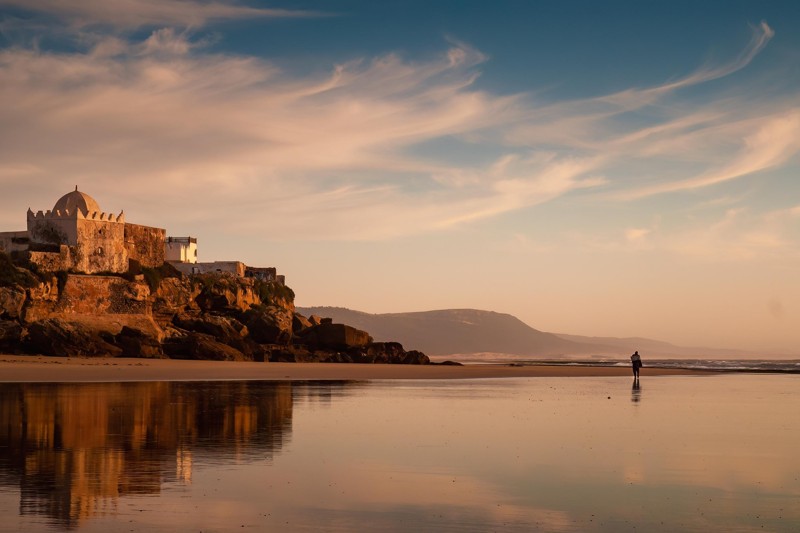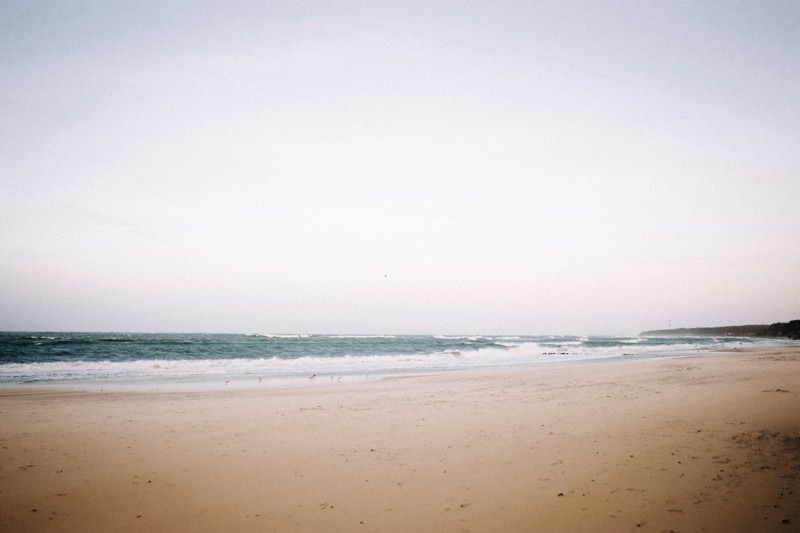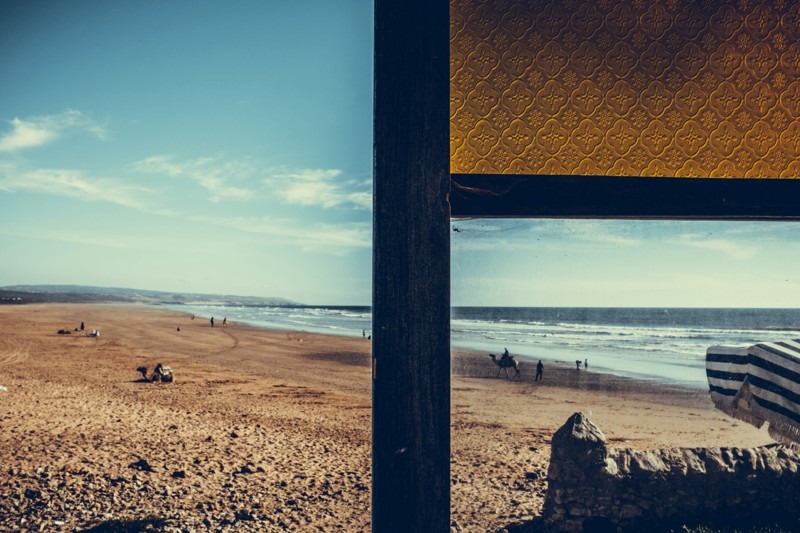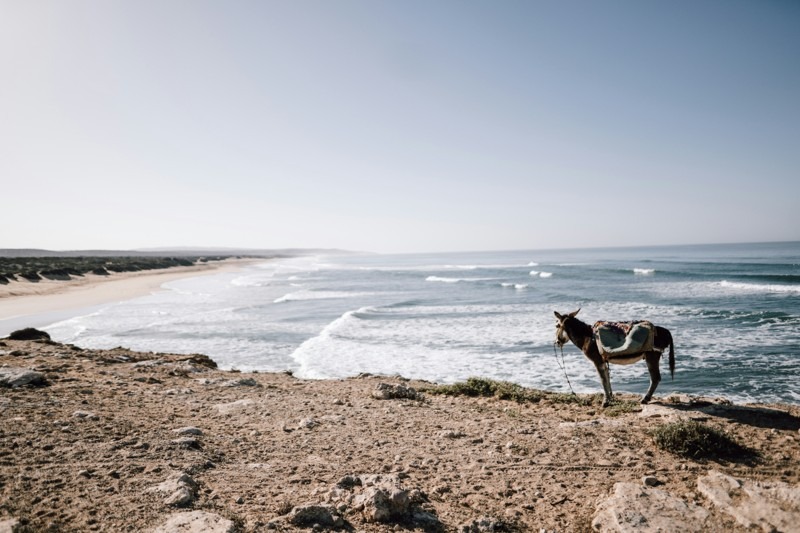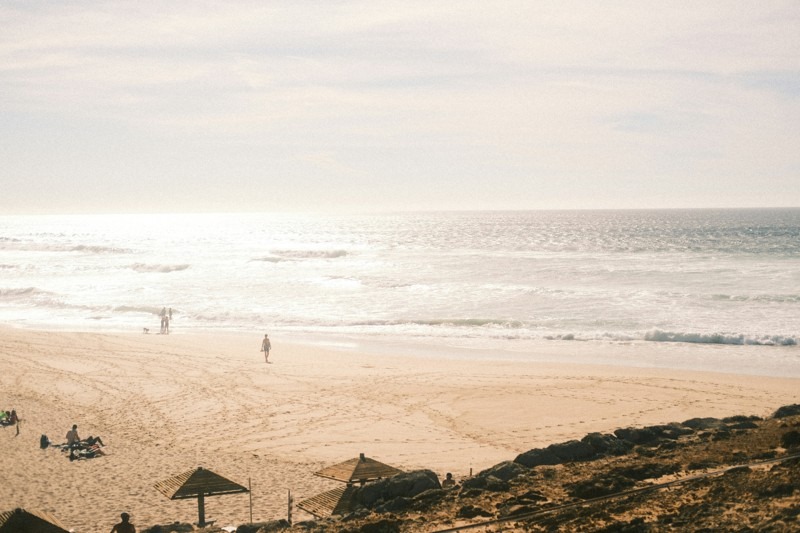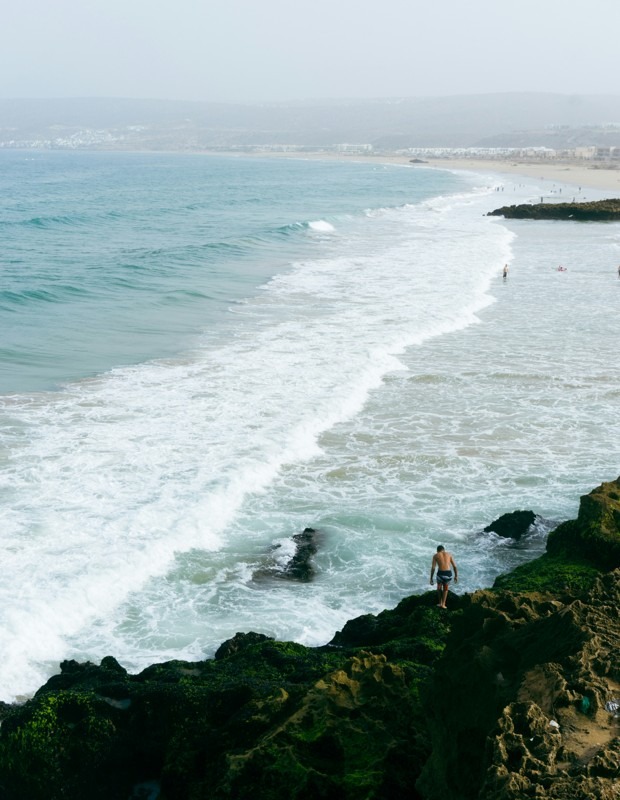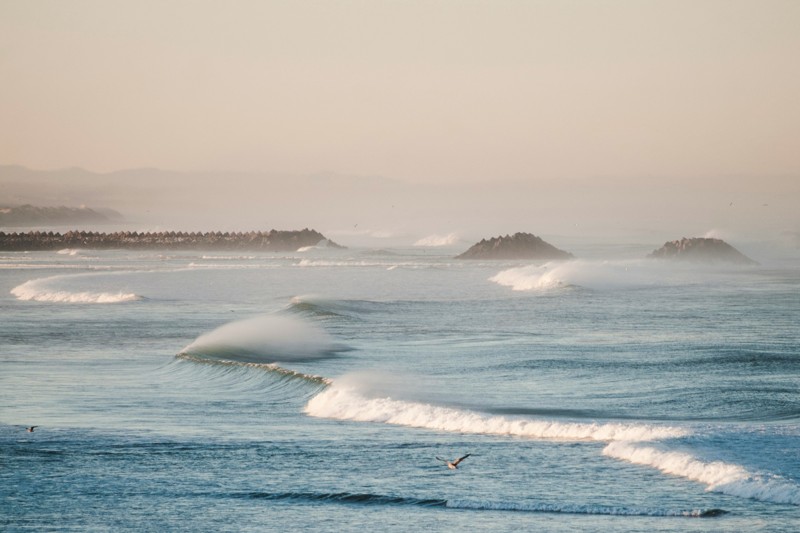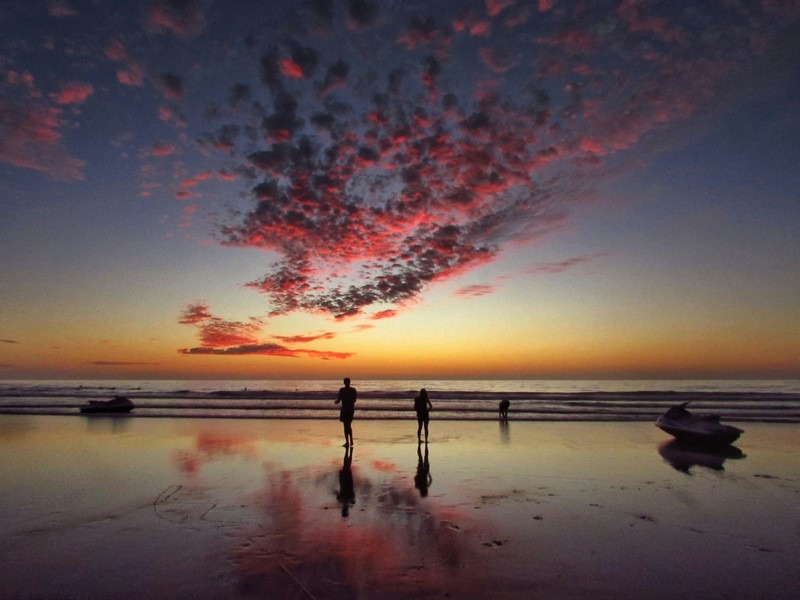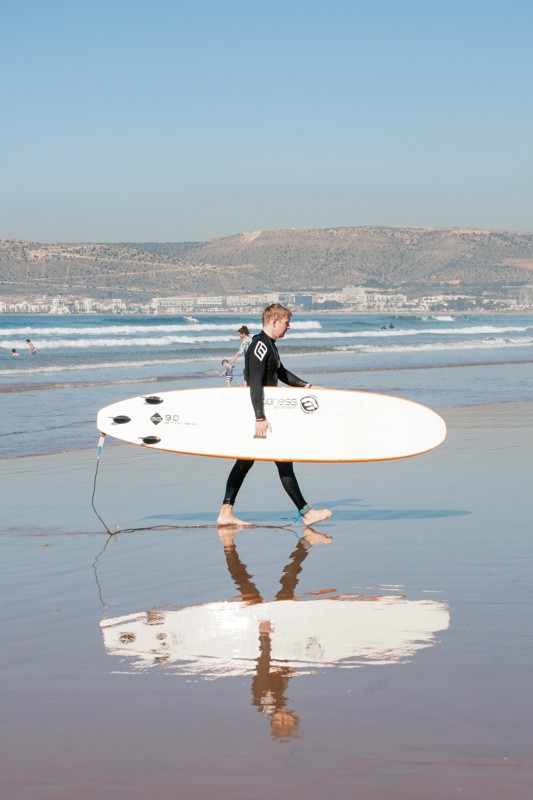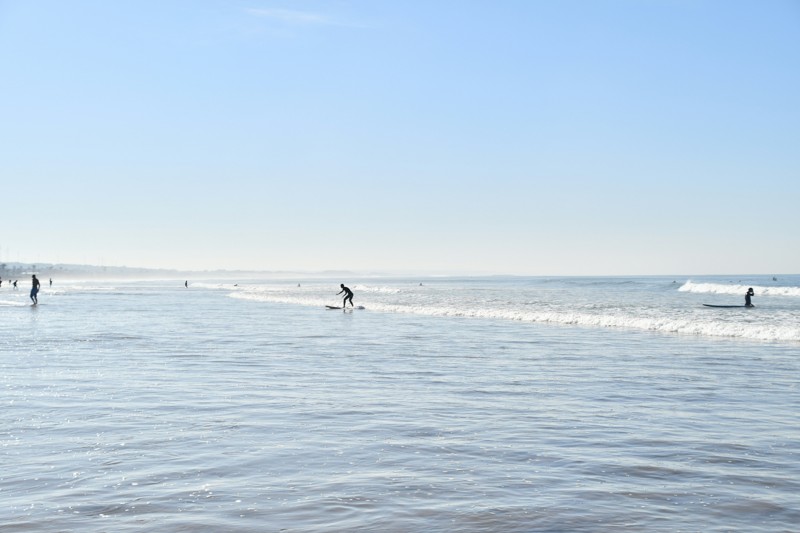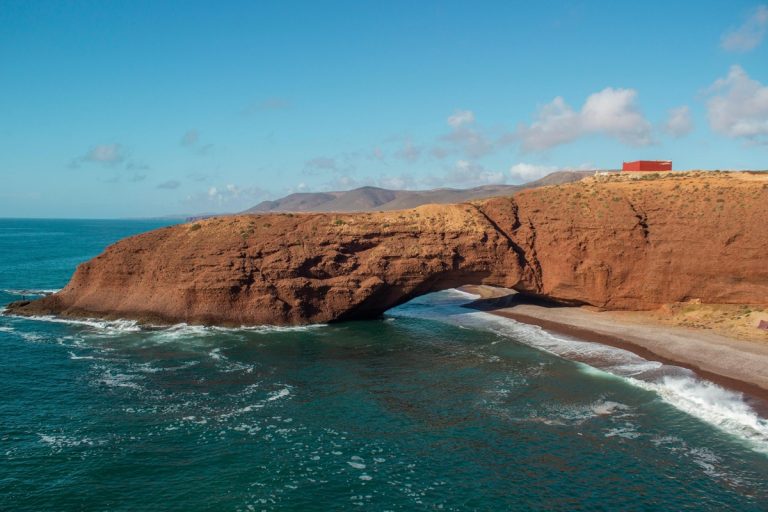Surfing Spots in Morocco: Your Ultimate Guide to Wave Riding Paradise
Surfing spots in Morocco have become something of a pilgrimage site for wave riders worldwide, and honestly—after spending countless weeks exploring this coastline with saltwater in my hair and sand between my toes—I completely understand why. There’s this magnetic pull to these shores, something about the way the Atlantic swells wrap around ancient fishing villages and create these impossibly long point breaks that just… well, it changes you.
I remember my first morning in Taghazout, watching the dawn light paint Anchor Point in shades of rose gold while surfers were already paddling out (these people are serious, I tell you). The air smelled like fresh bread from nearby bakeries mixing with that distinctive ocean scent, and I thought to myself, “Layla, you’ve traveled everywhere in Morocco, but this… this is something entirely different.” And I was right. The surfing spots in Morocco aren’t just about the waves—though those are spectacular—they’re about the entire experience that surrounds them.
It’s not just the steady waves or the warm water (17°C feels like a luxury when you’re used to freezing Atlantic waters) that make Morocco’s surf scene so special. It’s the way everything comes together: the affordability that lets you extend your trip indefinitely, the sunshine that seems to follow you everywhere, the welcoming locals who’ve embraced surf culture while maintaining their authentic Moroccan identity, and yes—those perfect right-hand point breaks that seem to go on forever.
But let me be honest with you from the start, because that’s what friends do. Morocco’s surf spots, particularly around Taghazout, are crowded. Sometimes frustratingly so. I’ve watched waves get burned, seen lineups packed with fifty-plus surfers, and experienced the chaos that comes when every surf camp in town decides today’s the day for lessons at Devil’s Rock. It’s part of the reality now, and you need to know this before you book your ticket.
Still here? Good. Because despite the crowds—or maybe because of them, in some strange way—Morocco remains one of the most rewarding surf destinations on the planet. The key is knowing where to go, when to go, and how to navigate this coastline like someone who actually lives here rather than just passing through.
Understanding Morocco’s Surf Geography: From Agadir to Essaouira
The Moroccan coastline stretches for over 1,800 kilometers along the Atlantic, but the prime surf spots near Marrakech and the rest of southern Morocco cluster in a relatively compact zone. Think of it as nature’s gift to wave riders: the Atlas Mountains create an amphitheater effect, the continental shelf shapes swells perfectly, and the coastline orientation means you’re getting waves from multiple swell directions.
I’ve driven this coast more times than I can count—usually in that predawn darkness when you’re chasing conditions before the wind picks up—and the concentration of quality breaks between Agadir and Essaouira is just remarkable. Within a 100-kilometer stretch, you’ve got everything from beginner-friendly beach breaks to heavy slabs that’ll make your heart race before you even paddle out.
Agadir surf beaches serve as the region’s commercial hub, and while the city itself isn’t my favorite (too much concrete, too many high-rises blocking the ocean view), it’s strategically positioned. Twenty minutes north, you hit Taghazout. Continue up the coast, and you’ll find Imsouane’s legendary point. Further still, Essaouira offers a completely different vibe—more wind, more bohemian, more… untamed, somehow.
The beauty of this setup is flexibility. Stay in one spot and you’ve got multiple breaks within walking distance. Rent a car (which I absolutely recommend, despite the occasionally terrifying driving standards), and you can chase conditions up and down the coast. I’ve surfed Anchor Point at sunrise, grabbed lunch in Tamraght, checked Imsouane in the afternoon, and ended the day watching sunset at Sidi Kaouki. That’s the kind of day that reminds you why you travel.
Taghazout: The Epicenter of Moroccan Surf Culture
Let’s start where most surf trips begin and end: Taghazout, or “Tazo,” as the locals and regulars call it. This former fishing village has transformed into Morocco’s surf mecca, and depending on who you ask, that’s either the best thing that ever happened or the beginning of the end. I fall somewhere in the middle, appreciating what it offers while mourning what’s been lost.
The Taghazout Experience: What to Expect
Tazo is essentially a condensed maze of whitewashed buildings, surf shops, yoga studios, smoothie bars, and accommodations ranging from basic hostels to boutique hotels with infinity pools. Everything spills onto this crescent of beach where you can watch multiple breaks from the same vantage point. It’s convenient, sure—but it’s also become quite Westernized. The cafe prices reflect this (you’ll pay European rates, not Moroccan ones), and the menus cater to international palates rather than traditional Moroccan cuisine.
But here’s what Tazo does offer: surf camps morocco galore, equipment rentals on every corner, experienced surf rental shops in Morocco with quality boards, and instant community. You’ll make friends in hours, not days. There’s something about shared wave sessions and sunset viewings that accelerates relationships. Plus, the infrastructure means you’re never far from a mechanic if your rental car acts up, a pharmacy if you need it, or a reliable wifi connection when you absolutely must upload that barrel shot to Instagram (don’t pretend you won’t).
The best time to surf morocco around Taghazout runs from December through March. This is when those North Atlantic swells march in with reliable consistency, bringing the coast alive with waves. I’m talking proper overhead sets at the points, conditions that make you understand why people plan their entire winter around being here. Outside this window, you’re gambling. Summer brings smaller, windier conditions—still surfable, especially for beginners, but not the Morocco of legend.
Anchor Point: Morocco’s Most Famous Wave
If you’ve seen any footage of surfing spots in Morocco, chances are it featured Anchor Point. This right-hand point break is, without exaggeration, one of the finest waves I’ve ever surfed. When conditions align—solid swell, light offshore wind, mid-to-low tide—Anchor Point delivers rides that can last several hundred meters. The wave has everything: an initial section for speed generation, a middle zone perfect for carving turns, sections that barrel if you’re in the right spot, and this beautiful racing quality that rewards good positioning.
I’ve caught waves at Anchor Point that lasted so long my legs were shaking by the end. Anchor Point offers a perfect blend of wall and pocket, allowing you to effortlessly dance up and down the face, setting up turns, identifying small boost sections, and deciphering the wave’s secrets. Those are the rides you remember years later, the ones that justify the flight, the travel time, everything.
But—and this is a significant but—Anchor Point is incredibly crowded. I’m talking fifty-plus surfers on good days, with a clear hierarchy in the lineup. The local surfers (rightfully) dominate, taking waves with authority and sometimes burning anyone in their path. Then you’ve got the expats who’ve spent months or years here, who know the wave intimately and position themselves accordingly. Finally, there’s everyone else: the week-long visitors, the surf camp morocco all inclusive clients, and the hopefuls paddling out with stars in their eyes.
The crowd management—or lack thereof—can be frustrating. I’ve seen good waves go unharvested because three people dropped in simultaneously. I’ve experienced the chaos of everyone scrambling for position while the set approaches. And yes, I’ve been burned more times than I care to admit, usually by someone who either doesn’t know lineup etiquette or simply doesn’t care.
My advice? Go with realistic expectations. Anchor Point rewards early mornings, patience, and humility. Don’t expect to catch twenty waves in a session. Focus on quality over quantity. Position yourself slightly inside where the crowd thins, and you might snag waves that others miss. Most importantly, respect the locals—they live here, you’re visiting, and that distinction matters in the water.
The Other Taghazout Breaks: Beyond Anchor Point
Hash Point and Panoramas sit right in town, offering easier, mushier waves that work better for progression than performance. These spots get packed with students learning to surf in Morocco, creating a unique dynamic. If you’re an experienced surfer, they’re probably too slow and crowded. But if you’re working on your fundamentals, they provide a forgiving environment.
Killer’s (or Killer Point, depending on who you ask) sits north of Anchor Point, requiring a proper commitment to reach. At high tide, you’re looking at a twenty-minute paddle through deep water. At low tide, you can walk across the reef before paddling out. The wave itself rewards the effort: a longer, more consistent wall than Anchor Point, with fewer surfers because of the access issue. I’ve had some of my best sessions at Killer’s, partly because the vibe feels less frenetic and more focused. People who make the trek tend to be more serious about surfing, which generally means better lineup etiquette.
La Source functions as Tazo’s neighborhood beach break, offering those scrappy peaks that change with the sandbar. Sometimes you score, sometimes you don’t. It’s the spot you check when everything else looks terrible, hoping for a surprise. I’ve had fun sessions there, but I’ve also driven away shaking my head more often than not.
Bananas (also called Banana Point) delivers that user-friendly right-hander perfect for longboards and mid-lengths. The wave’s fatter, slower, and more forgiving—ideal for surf lessons for intermediates morocco or anyone wanting a mellow session without the Anchor Point intensity. When swell gets big and aggressive elsewhere, Bananas often remains approachable. Plus, it’s pretty—you’re surfing with that gorgeous Moroccan coastline as your backdrop, watching the light change as the day progresses.
Devil’s Rock sits just south, offering beach break peaks with this fun right wedge on one side. The wave quality can be excellent, with genuinely enjoyable A-frames that allow for progression and experimentation. The problem? Every surf school and surf camp in the region seems to converge here simultaneously. I’ve pulled up to glassy, perfect conditions only to watch forty beginners on foam boards paddle out en masse. It’s nobody’s fault—they’re learning, which is great—but it does make for challenging sessions if you’re seeking anything beyond survival mode.
Imsouane: Morocco’s Longest Wave and Laid-Back Alternative
Imsouane surf lessons and the general scene there represent a different Morocco, one that feels less developed and more authentically integrated into local life. About an hour north of Taghazout, Imsouane offers what many consider Morocco’s—and possibly Africa’s—longest rideable wave. I’m not talking hype; I’m talking waves where you ride until your legs genuinely tire, where you make multiple sections and still have a wave left, and where you paddle back to shore simply because continuing would be excessive.
The Bay: Imsouane’s Crown Jewel
The Bay at Imsouane operates on low tide, creating this long, tapering right-hand point that welcomes longboarders, mid-lengths, and anyone who appreciates style over power. The wave isn’t aggressive—it’s mellow, friendly, and inviting. But it’s so damn long that it becomes addictive. I’ve caught waves there that lasted several minutes, making multiple sections, walking to the nose, setting up turns, and just playing with this endless wall of water.
What I love about The Bay: it works on multiple peaks. The initial takeoff zone at the point can get messy (I agree with the surfers who prefer skipping it), but as the wave enters the bay proper, it settles into these perfect sections. You can catch waves at the second peak, third peak, or even fourth peak depending on conditions. This distribution spreads the crowd somewhat, though make no mistake—Imsouane gets busy too.
The tide windows matter enormously here. During spring tides (new and full moon phases), the water level changes rapidly, creating currents that’ll sweep you down the point almost comically fast. Miss a wave and suddenly you’re 100 meters south of where you started, paddling against serious flow. During neap tides (half moon phases), currents relax, making for much more manageable sessions.
The routine at Imsouane becomes ritualistic: paddle out, catch a wave, ride it as far as you can or want to, walk back up the beach to the entry point, and repeat. In a good four-hour session, you might make six or seven rounds. It sounds exhausting (it is), but it’s also enormously satisfying. Each wave feels earned, and that long walk gives you time to decompress, watch other surfers, and appreciate where you are.
The Cathedral: Imsouane’s Power Section
On the north end of Imsouane sits The Cathedral (named for some rock formation I’ve honestly never been able to identify clearly). This spot works on mid-tide and delivers more power and steepness than The Bay. Shortboarders gravitate here, seeking that vertical face and faster wall. When The Bay goes small, The Cathedral might still have shape and push.
I’ve surfed it on smaller days when longboarders dominated and on bigger days when the level of surfing jumped considerably. The wave isn’t particularly long—maybe a hundred meters of quality section—but it’s fun, challenging, and generally less crowded than The Bay simply because The Bay is… well, The Bay.
Imsouane Village: A Different Vibe Entirely
Where Taghazout feels like a surf resort, Imsouane retains its fishing village character. Sure, surf tourism has changed things—the guesthouses, the cafes selling crepes with amlou (that incredible almond-argan butter that becomes a daily addiction), and the surf hostels taghazout influence spreading north. But fishermen still dominate the harbor, the local community remains visible and active, and the pace feels distinctly slower.
I stayed in Imsouane for a month once, and it became home in a way Taghazout never quite does. The rhythm of checking surf from the cliff each morning, knowing the shopkeepers, greeting the same dogs (so many friendly dogs!), and finding your favorite spot for mint tea—these small rituals create connection. The town has public showers (hot water for 10 dirhams!), decent grocery stores, reliable wifi in most cafes, and enough restaurants to avoid repetition.
Cost of surfing in Morocco drops noticeably in Imsouane compared to Taghazout. Accommodation is cheaper, meals are more affordable, and everything feels less tourist-inflated. You can live comfortably on $30-40 per day, including food, coffee, and incidentals. Add accommodation and you’re still under $60 daily if you choose mid-range options. For budget surf trip morocco planning, Imsouane delivers exceptional value.
Essaouira and Sidi Kaouki: Wind, Waves, and Different Energy
About two and a half hours north of Taghazout sits Essaouira, this gorgeous medina town that’s been attracting artists, musicians, and free spirits for decades. The Essaouira surf school scene here caters more to beginners and kiteboarders, because Essaouira gets wind. Serious, reliable, consistent wind that makes summer surfing challenging but turns the bay into a kiteboarding paradise.
I’ll be honest: Essaouira’s surf can be frustrating. That wind creates chop, making wave reading difficult and sessions exhausting. But when conditions align—early mornings before wind picks up, or those rare calm days—you’ve got several quality breaks around town. The beach break in front of the medina offers forgiving waves for beginners. Further south, you’ll find more serious options for intermediate surfers.
Sidi Kaouki: The Bohemian Surf Village
Twenty kilometers south of Essaouira lies Sidi Kaouki surf guide territory: this tiny village with an endless beach, consistent waves, and a decidedly bohemian atmosphere. Where Taghazout feels commercial and Imsouane feels established, Sidi Kaouki feels… free, somehow. Less structure, more space, and winds that challenge you but also create unique conditions.
The main break is a beach break stretching for kilometers, offering peaks that shift with sandbars and swell direction. When it’s on, it’s really on—those A-frame peaks allowing both rights and lefts, plenty of space to spread out, and fewer surfers competing for each wave. The trade-off? Wind. Always wind. You learn to surf in choppy conditions, to read waves through texture, and to time your paddles between gusts.
I’ve spent weeks in Sidi Kaouki, drawn by its alternative vibe and the raw beauty of that coastline. The village has basic amenities—small shops and several excellent cafes and guesthouses ranging from rustic to refined. It’s not for everyone. If you need infrastructure and convenience, stick to Taghazout. But if you want space, both physical and mental, Sidi Kaouki delivers.
The local point breaks exist but require serious skill to access—you’re scrambling down cliffs with your board, which rules out longboards and makes every session feel like an adventure (or misadventure). But when you succeed, when you’re surfing an empty point with just your friends while most tourists remain on the main beach, those sessions become the stories you tell for years.
Agadir: The Overlooked Surf Hub
People often dismiss Agadir surf beaches as too urban, too touristy, too… not Taghazout. And yes, Agadir is a proper city with all the complications that brings. But hear me out: staying in Agadir makes sense for certain travelers, and the surf options aren’t terrible.
The beach break along Agadir’s extensive coastline provides beginner-friendly conditions most days. It’s not spectacular, but it’s accessible and uncrowded compared to Taghazout, and you’ve got lifeguards, nearby facilities, and zero hassle. For families doing family surf holidays morocco or travelers who want comfort along with their waves, Agadir delivers.
The city offers advantages: international hotels with predictable standards (Hilton, Radisson, etc.), shopping, healthcare, restaurants serving everything from traditional Moroccan to international cuisine, and nightlife if you’re into that. You’re trading surf town authenticity for urban convenience.
From Agadir, everywhere is accessible. Taghazout is twenty minutes north. The southern breaks—Banana Point, Devil’s Rock, even Killer’s—are thirty minutes. Imsouane makes a doable day trip. You gain flexibility while sacrificing that immediate surf town immersion.
I’ll stay in Agadir when traveling with non-surfing companions or when I want a proper hotel room and reliable wifi for work. But for pure surf trips? I prefer being closer to the breaks, accepting the trade-offs that come with that choice.
The Hidden and Lesser-Known Breaks
Hidden surf gems morocco still exist, though “hidden” becomes increasingly relative as social media and surf apps reveal everything. But with exploration—and willingness to drive rocky roads or hike a bit—you can still find uncrowded waves.
North of Imsouane, the coastline continues with scattered breaks that see fewer surfers. Some require 4×4 access. Some only work on specific swell and tide combinations. Some are legitimately dangerous for anyone below expert level. I’m deliberately vague here because part of discovering these places involves effort, and that effort is what keeps them relatively uncrowded.
South of Agadir toward Mirleft and beyond, you’ll find powerful beach breaks and points that handle serious size. The waves get bigger, heavier, and less forgiving. The Morocco surf season extends here because southern exposures catch different swells. But you’re also venturing into more remote territory, where surf infrastructure disappears and self-sufficiency becomes essential.
I’ve explored far down the coast toward Sidi Ifni and beyond, chasing that elusive empty lineup. Sometimes I found it. More often, I discovered why certain spots remain relatively unknown—difficult access, inconsistent conditions, or quality that doesn’t justify the journey. But the searching itself, that exploration with possibility hanging in the air, that remains endlessly appealing.
Practical Planning: Making Your Morocco Surf Trip Successful
When to Go: Timing Your Trip Right
Surf Morocco October through March offers the most consistent conditions and best waves. December through February is prime time—bigger swells, more regular patterns, cooler air temperatures, and yes, more crowds. October and November provide transition conditions: still good but less predictable. March can surprise you with excellent swells or disappoint with early summer patterns.
Surf Morocco December specifically delivers what most surfers imagine when planning their trip: overhead waves at the points, consistent daily sessions, cool mornings warming to pleasant afternoons, and that winter light that makes everything look cinematic.
Summer (June through September) brings smaller, windier conditions better suited to beginners or wind sports enthusiasts. The Moroccan surf culture stays active year-round, but experienced surfers generally avoid summer unless seeking uncrowded, mellow sessions for practice or teaching.
What to Bring: Packing Essentials
Packing lists for Morocco surf trip essentials start with wetsuits. Water temperatures hover around 17°C year-round—warmer than northern Europe, colder than the tropics. Most surfers find a 3/2mm adequate for afternoon sessions, while a 4/3mm provides comfort for longer sessions and early mornings. I’ve surfed comfortably in both, though the 4/3mm felt like overkill during midday sessions in warmer months.
Bring multiple wetsuit options if you can. Having a backup when one is still wet from yesterday makes life easier. Include booties for reef breaks, though sandy points work fine without them. A wetsuit changing mat (or an old towel) helps maintain sanity when dealing with sandy parking lots.
It’s very important to protect your skin from the sun. Morocco’s latitude means that even when the weather is mild, the UV rays are strong. I’ve watched countless surfers arrive pale and leave burned, underestimating the sun because the air felt cool. Bring high-SPF, water-resistant sunscreen and use it religiously. Rash guards for additional coverage help too.
The board you choose depends on how good you are and what kind of waves you like. Most visitors bring one board and supplement with rentals, which makes sense—traveling with multiple boards creates hassles. Surf gear rental Taghazout shops stock quality equipment, from soft-tops for beginners to performance shortboards and various mid-lengths and longboards.
If you’re learning to surf in Morocco, consider just renting throughout your trip. The schools and rental shops maintain equipment professionally, and you’ll avoid baggage fees and travel complications. Experienced surfers might bring their magic board and rent a backup, giving options without excessive luggage.
Other essentials include first-aid supplies (particularly for reef cuts and sea urchin spines—tweezers, antiseptic, bandages), a car phone mount for navigation, a dry bag for valuables at the beach, and a headlamp for those predawn surf checks.
Transportation: Getting Around the Coast
Surf day trips from Agadir and mobility between breaks require vehicles. Renting a car provides freedom to chase conditions, explore hidden breaks, and avoid depending on others’ schedules. The roads around Taghazout and Imsouane are generally decent—paved, maintained, and marked. Driving standards, though… that’s another story.
Moroccan driving involves creative interpretations of traffic laws. Lanes become suggestions, indicators are optional, and overtaking happens in ways that’ll make your heart race initially. You adjust. Drive defensively and stay alert, especially in Agadir’s city traffic, where chaos reaches peak levels.
Most breaks have parking nearby, usually with someone collecting 10 dirhams to “watch your car.” It’s not really a scam—it’s an informal job providing actual security. Pay it without complaint. The few dirhams prevent opportunistic theft and support the local economy.
If you can’t or won’t drive, staying in Taghazout makes sense. Walking reaches several breaks, and you can join others heading to further spots. The community culture means rides happen organically, though you shouldn’t depend on this exclusively.
Accommodation: Where to Stay
There are a lot of different types of surf hostels in Taghazout, from simple backpacker places to stylish ones that would look great in California or Australia. You can expect to pay $10 to $15 a night for a dorm bed and $25 to $40 a night for a private room. Most of them include breakfast, common areas, and easy ways to meet new people. Hostels are great for people who want to travel alone or with others.
Morocco surf resorts and surf camps offer packages including accommodation, meals, coaching, and equipment. All-inclusive options work well for beginners wanting structured progression without logistical headaches. Prices vary wildly—$500-1500+ per week depending on accommodation standard, coaching quality, and included amenities.
Mid-range riads and guesthouses provide Moroccan atmosphere with modern comfort. These typically cost $40-80 per night for doubles, include breakfast, and offer more privacy than hostels while remaining social enough to meet fellow travelers.
For family surf holidays in Morocco, Agadir’s hotels provide predictable Western standards, kids’ clubs, pools, and convenience. You sacrifice surf town immersion but gain family-friendly infrastructure.
Imsouane offers slightly cheaper options across all categories—hostels for $8-12, guesthouses from $30-60, and apartments for longer stays. The market remains less inflated than Taghazout, though this changes gradually each season.
Costs: Budgeting Your Trip
Cost of surfing in Morocco varies dramatically based on choices. Budget travelers can survive on $30-40 daily, including food, coffee, and incidentals, plus accommodation. This means hostel dorms, local restaurants, minimal alcohol (which is expensive in Muslim countries), and free surf spots.
Mid-range travelers spending $60-100 daily access comfortable private accommodation, regular cafe meals, occasional nice dinners, rental boards, and transportation flexibility. This budget allows comfort without excess.
Higher-end experiences—surf camp Morocco all-inclusive packages, nice hotels, and frequent dining out push costs toward $100-200+ daily. At this level, you’re approaching European prices, which somewhat defeats Morocco’s affordability advantage.
Sample costs: board rental $10-15 daily, wetsuit rental $5-10, cafe meal $5-8, nice restaurant meal $15-25, mint tea $0.50-1, fresh orange juice $1-2, surf lesson $30-50, weekly surf camp $400-1000+, car rental $25-35 daily.
Budget surf trip Moroccan success requires flexibility and willingness to embrace the local lifestyle. Eat tagines and couscous at neighborhood restaurants rather than tourist cafes. Stay in hostels or budget guesthouses. Share rental cars with other travelers. Skip alcohol (it’s expensive and honestly, hydration helps surfing more). Your money stretches remarkably far with these choices.
Safety Considerations
Morocco is generally safe for travelers, dramatically safer than its reputation suggested a decade ago. The surf tourism boom brought increased security awareness and infrastructure improvements. I’ve traveled here extensively, both solo and with companions, and serious incidents are rare.
That said, maintain sensible precautions. Don’t leave valuables visible in cars. Keep wetsuits and boards locked or within sight. Use car parks with attendants. Avoid walking alone late at night in unfamiliar areas, particularly for women travelers.
Female-friendly surf camps morocco has become much more established, with numerous operations catering specifically to women surfers or maintaining policies ensuring comfortable, respectful environments. Many women surf Morocco solo or in female-only groups successfully. The key is choosing accommodations thoughtfully and trusting your instincts about situations.
The main dangers in the water are crowds, strong currents during spring tides, and the occasional aggressive surfer. You need to be careful of rocks and urchins when you surf on a reef. Respect your skill level—Morocco’s points can make even bad surfers look good, which can lead you to try things that are too hard for you.
Understanding the Crowd Dynamics and Lineup Culture
Let’s talk honestly about the reality of surfing Morocco now, because managing expectations prevents frustration and disappointment.
Every named break on every map will be crowded. If you’ve read about it online, seen it in videos, or found it on a surf app, it’s blown up. Anchor Point regularly has fifty-plus surfers. La Source packs out. Even Killer’s, despite the difficult access, sees crowds. Imsouane’s Bay might have sixty people spread along its length. Devil’s Rock gets swarmed by surf schools.
The crowd composition varies by conditions. Smaller, mushier days draw in students and intermediates who want to learn to surf in Morocco—thirty foam board riders making a mess. Bigger, better days bring out local rippers and experienced travelers, creating different challenges as competition for waves intensifies.
Local surfers dominate prime spots, taking waves with confidence and authority. This is completely appropriate—they live here, and you’re visiting. But the level of aggression sometimes surprises visitors. Burns happen constantly, even between locals. Waves get ruined because three people drop in simultaneously. The hectic energy can feel overwhelming.
My strategy: go with humility and patience. Position yourself slightly inside where crowds thin. Focus on quality waves rather than quantity. Celebrate the five good rides rather than lamenting the twenty you missed. Surf the less famous spots. Visit during shoulder seasons (October-November or March) when crowds ease slightly.
Accept that Morocco is no longer a secret destination. The days of uncrowded perfection ended before most current surfers learned to pop up. You’re experiencing Morocco’s surf in its contemporary reality—crowded but still incredible, challenging but ultimately rewarding.
Regional Surf Camps, Lessons, and Coaching
Surf camps morocco prices range from budget operations at $400-500 per week to premium camps at $1200-1500+. What you’re paying for varies: accommodation quality, coach-to-student ratios, equipment standards, additional amenities (yoga, meals, excursions), and location.
Do your research carefully. Cheap camps might cram a lot of students into small spaces, give them bad equipment, hire coaches who aren’t very good, or put you far away from the waves. Mid-range camps ($600–900 per week) usually offer a good mix of value and quality, with comfortable places to stay, experienced coaches, good equipment, and reasonable group sizes.
Premium camps usually have better locations, better gear, more things to do, and nicer places to stay. They also offer semi-private coaching. It all depends on your priorities and budget if this is worth the money.
Compared to Taghazout’s sometimes impersonal larger camps, Essaouira surf school and Imsouane surf lesson operations tend to have lower prices and smaller, more personal experiences. If you’re an intermediate surfer looking for lessons in Morocco, look for companies that offer specific progression programs instead of general beginner lessons.
Private lessons cost between $50 and $80 for 1 to 2 hours, and they give you focused coaching that you can’t get in a group. Even though they cost more per hour, private lessons or small semi-private groups are better value if you’re really working on specific skills.
A lot of experienced surfers don’t go to camps at all. Instead, they stay in their own places and surf alone or with friends. This gives you the most freedom and lowers costs, but it takes away the benefits of structured progression and local knowledge.
Seasonal Variations and Optimal Timing
Best time to surf Morocco depends partly on what you’re seeking. December-February provides the biggest, most consistent swells. January particularly delivers those epic days when everything aligns—solid swell, light wind, perfect tides. But January also brings peak crowds and highest accommodation costs.
October and November are great months to visit because the swells are still regular, there are fewer people, and the weather is warmer. In March, late-season swells can be a pleasant surprise, or summer patterns can start early and be a letdown.
April and May bring inconsistent conditions—some good days, many mediocre ones. The dedicated surfer finds waves, but you’re gambling more. June through September is summer: smaller swells, stronger winds, and hotter temperatures. Beginners find friendly conditions. Experienced surfers often look elsewhere unless seeking uncrowded mellow waves for practice.
The surf season in Morocco lasts all year because waves always come in somewhere. But the quality, consistency, and overall experience are at their best in the winter.
Beyond Surfing: Cultural Immersion and Experiences
Morocco has a lot more to offer than just waves. The medinas of Marrakech and Essaouira have sights, sounds, and smells that will stick with you for a long time. The Atlas Mountains rise sharply inland, making for great hiking, Berber villages, and breathtaking views.
Day trips from surf towns on the coast are a good idea for days off or when the weather isn’t good. Paradise Valley, which is close to Agadir, has beautiful natural pools where you can swim in fresh water.
Marrakech sits just three hours from Taghazout, accessible for overnight trips combining surf and city exploration.
The food culture deserves immersion. Tagines, couscous, pastilla, harira soup, fresh seafood, and endless mint tea. Street food includes things like b’ssara (fava bean soup), bocadillos (sandwiches), and those incredible msemen (Moroccan flatbreads) served with honey and butter. The amlou mentioned earlier—almond and argan butter—becomes addictive spread on bread or eaten straight from the jar.
Coffee culture runs deep, with cafes serving everything from traditional Moroccan coffee to flat whites that’d satisfy Melbourne standards. I’ve spent countless hours in Moroccan cafes writing, planning, people-watching, and decompressing from surf sessions.
The surf culture in Morocco is interesting in its own right. For example, how this traditionally conservative Muslim country embraced surf tourism, how fishing villages changed, how local surfers claimed their waves, and how women’s surfing became more accepted despite cultural barriers. These stories give your visit more meaning than just counting how many waves you rode.
Insider Tips for Maximizing Your Experience
Arrive during neap tides if possible—the more manageable currents make sessions less exhausting, particularly at Imsouane. Check moon phases when booking.
Bring your own wax. Finding quality wax in Morocco requires hunting. The surf shops in Taghazout stock it, but selections can be limited.
Learn basic French or Arabic phrases. English works in tourist areas, but even attempting the local language opens doors and creates connections. “Shukran” (thank you), “salam alaikum” (peace be upon you), and “la shukran” (no thank you—essential for declining persistent vendors) serve you well.
Befriend local surfers respectfully. Don’t ask them to reveal secret spots or guide you for free. But real friendships do happen, and locals who like how you treat them might tell you things you wouldn’t have found out otherwise.
Explore beyond the famous spots. Drive the coast roads. Stop when something looks interesting. Some of my best discoveries came from curiosity rather than research.
Manage your energy. Morocco’s surfability can tempt you into marathon sessions day after day. But exhaustion leads to diminishing returns and increased injury risk. Rest days matter. Use them for exploration, cultural experiences, or simply lounging with a book and mint tea.
Hydration becomes crucial in Morocco’s climate. Bottled water costs little. Drink constantly, particularly during multi-hour sessions.
The Reality Check: What Morocco Isn’t
Morocco won’t provide secret uncrowded perfection. Anyone selling that dream is lying or hasn’t visited recently. The golden age of empty lineups ended years ago, and nostalgia for it—while understandable—doesn’t help you enjoy the Morocco that exists today.
Morocco also isn’t always sunny and perfect. I’ve experienced weeks of onshore winds ruining conditions. Days when every spot looked terrible. Sessions where the crowd frustration overwhelmed the wave quality. Stomach issues from food (it happens, despite precautions). Car problems on remote roads. Miscommunications about accommodation. Being in a developing country, where infrastructure doesn’t always match Western expectations, amplified the usual travel complications.
The romanticized vision—waking to perfect glassy conditions, paddling out to empty lineups, surfing until exhausted, then enjoying authentic Moroccan feasts for pennies—rarely materializes completely. Instead, you get pieces of that vision mixed with reality’s complications. Some days deliver perfection. Others test your patience and flexibility.
Knowing this stops you from being disappointed. Moroccans value being able to change, laughing at problems, and being grateful for what works instead of getting angry about what doesn’t. The travelers who do well here take in the whole experience instead of just focusing on the number of waves or the best conditions.
Taghazout Surf Spots Guide: A Detailed Breakdown
Since Taghazout remains the epicenter, let’s dive deeper into each break’s specifics beyond what I’ve already covered.
Panoramas sits at Taghazout’s southern end, a lazy right-hander working on higher tides. It’s mushy and forgiving, perfect for longboards when you want zero pressure. I’ve had lovely afternoon sessions there, sharing waves with older Moroccan surfers and beginners finding their feet. Nobody’s competing aggressively. Everyone’s smiling. These sessions won’t make your highlight reel, but they’ll make you happy.
Mysteries (sometimes called Mysteres) requires substantial swell to wake up, but when it does, this right-hand point delivers powerful, hollow sections that reward good positioning. It sits between Taghazout and Anchor Point, often overlooked because—let’s be honest—if Mysteries is working, Anchor Point is probably firing, and everyone goes there instead. But on massive swells when Anchor Point becomes chaotic or closes out, Mysteries might offer cleaner options.
Boilers appear in conversations but rarely get surfed. It needs huge swell, specific tidal conditions, and courage—this is heavy water breaking over a serious reef. I’ve watched it from the cliff, admiring its power while acknowledging I’m probably not skilled enough to paddle out confidently. It’s there for the experts on those rare massive days.
The surf spots near Marrakech essentially mean this Taghazout region, since Marrakech sits three hours inland. Day-tripping from Marrakech for surf makes sense if you’re splitting your trip between city exploration and wave riding, but staying coastal obviously provides better access.
Morocco Surf Trip Itinerary: Sample Schedules
For a trip of two weeks, I would suggest: Day 1: Get to Agadir, get used to the area, and surf some easy breaks. Days 3–7: Stay in Taghazout, surf different breaks, and set up routines. Days 8–10: Take a road trip to Imsouane and see The Bay. Days 11 and 12: Go to Essaouira or Sidi Kaouki for a change of pace. Days 13–14: Go back to Taghazout or Agadir for your last surf sessions and then leave.
This provides variety without excessive moving. You experience Morocco’s main surf zones while maintaining enough stability to properly settle into spots.
A one-week trip necessitates more focus. I’d probably stay entirely in Taghazout, maybe with a day trip to Imsouane. Trying to cover too much ground in limited time creates stress rather than enjoyment.
Month-long trips (if you’re lucky enough to swing this) allow deeper exploration. To really enjoy Taghazout, you should stay there for two weeks instead of just a few days. Week three in Imsouane, or a week split between Imsouane and Sidi Kaouki. In the last week, you can either go back to your favorite places or head south toward Mirleft and beyond.
The key is balancing exploration with depth. Constantly moving prevents really knowing anywhere. Staying too long in one spot might breed boredom or frustration with crowds. Finding that sweet spot between variety and immersion creates the best experience.
Women Surfing in Morocco: Specific Considerations
Female-friendly surf camps Morocco has evolved significantly. Numerous operations now cater specifically to women or maintain cultures ensuring comfort and safety. Luna Surf Camp, Surf Berbere, Amouage Surf Camp, and others receive consistent positive feedback from women travelers.
I’ve spoken extensively with women surfers about their Morocco experiences, and the consensus is generally positive with caveats. The surf towns (Taghazout, Imsouane, and Sidi Kaouki) feel quite safe and welcoming. Women surf independently without major issues. The international community creates protective environments where inappropriate behavior gets called out quickly.
Outside surf towns, more traditional Morocco emerges. Conservative dress becomes more important (covering shoulders and knees). Men pay more attention. You need to be more aware and assertive when you go to markets and places that aren’t touristy. This isn’t just true in Morocco; it’s also true in other parts of North Africa and the Middle East. However, it’s important to note.
In the water, women generally report positive experiences. Local Moroccan surfers are usually respectful. The international crowd is used to women in lineups. Occasional incidents of condescension or inappropriate comments happen (as they do everywhere, unfortunately), but they’re not the norm.
Solo women travelers succeed in Morocco daily. Joining a surf camp provides instant community and support. Staying in well-reviewed hostels connects you with other travelers. Many women I’ve met prefer Morocco to certain supposedly more “progressive” surf destinations because the Muslim culture’s inherent hospitality and respect for guests creates genuine safety despite conservative surface impressions.
The Equipment Question: Bring or Rent?
Surf rental quality in Morocco varies from excellent to questionable. The established Taghazout shops generally maintain equipment well—you’ll find everything from soft-tops to performance shortboards, longboards, fish, mid-lengths, and even retro single fins. Daily rates run $10-15 for quality boards, sometimes cheaper for longer rentals.
Imsouane’s rental scene is smaller but still good, especially for longboards because of the way The Bay is. Essaouira has a lot of choices for both beginners and experienced kitesurfers.
The calculation: Does bringing your board justify the hassle and cost? Airline surfboard fees typically run $50-150 each way. You’ll pay $200-300 round-trip potentially. That covers twenty days of quality rentals. Plus, you’re dealing with travel complications, damage risk, and inflexibility if your board doesn’t suit conditions.
I usually bring one board (my trusted mid-length that handles Morocco’s points beautifully) and rent supplementary equipment. This gives me one board I know intimately while providing options for variety. If flying low-cost carriers with prohibitive surf fees, I sometimes rent entirely and accept the slight equipment compromise.
Wetsuits are trickier—rental wetsuits vary wildly in quality and fit. If you own a good wetsuit that packs relatively small (modern suits compress well), bringing it makes sense. The comfort and fit of your own wetsuit improves sessions significantly.
Food Culture and Where to Eat
Top 5 Restaurants to Try across Morocco’s surf coast:
Beyond restaurants, embrace street food: msemen from roadside vendors, fresh orange juice from corner stands, grilled corn on the beach, and those little shops selling rotisserie chicken with bread and olives. Some of my best meals cost under $3 and happened spontaneously rather than through planning.
Where to Stay: Detailed Accommodation Recommendations
Top 10 Hotels/Riads/Hostels in the Region:
The Spiritual and Personal Dimensions
I’ve talked to a lot of surfers about why Morocco is more than just waves. The call to prayer at dawn as you check the surf, the friendliness of strangers, the mix of old and new cultures, and the mix of rough and smooth all make for experiences that go deeper than most surf trips.
I’ve met people who arrived planning two weeks and stayed two months. Relationships form quickly—between travelers, with locals, and with the place itself. The rhythm of surf-focused life in Morocco, stripped of excessive complication, reminds you what actually matters: waves, community, simple pleasures, and presence.
The Muslim culture’s emphasis on hospitality creates genuine warmth. You’re invited for tea in people’s homes. Shopkeepers remember you and ask about your day. The fishermen share their catch. These small interactions accumulate into feeling welcomed rather than merely tolerated as a tourist.
As much as riding the waves, these moments become the trip’s essence: watching the sunrise from the roof of your riad, listening to the call to prayer, mentally planning your surf session, and drinking mint tea while your wetsuit dries. Instead of focusing on what you don’t have, Morocco teaches you to be patient, flexible, and grateful for what you do have.
FAQ: Your Morocco Surf Questions Answered
Final Thoughts: Embracing Morocco’s Contemporary Reality
Surfing spots in Morocco deliver world-class waves, incredible value, year-round sunshine, and experiences that’ll shape your surfing life. But they require accepting contemporary realities rather than chasing phantom perfection.
Yes, it’s crowded. Yes, lineups can be frustrating. Yes, some spots feel overdeveloped and commercialized. But Morocco still offers what made it legendary: those endless right-hand points, the warm water, the fascinating culture, the affordability allowing extended stays, and the community of wave-obsessed travelers from everywhere creating temporary families.
Your Morocco experience depends largely on attitude. Arrive with flexibility, humor about challenges, and appreciation for what works. Focus on catching five quality waves rather than lamenting twenty you missed. Enjoy the evening tagines and mint tea as much as the morning sessions. Make friends with other travelers and locals. Explore beyond the famous breaks. Rest when exhausted rather than forcing it.
The magic still exists here, just in different forms than historical narratives suggest. You won’t find empty perfection (that’s gone, if it ever existed as purely as memory suggests). Instead, you’ll find very good waves shared with many people, rich cultural experiences, incredible affordability, and the satisfaction of surfing some of the world’s finest points.
For me, despite everything I’ve mentioned about crowds and commercialization, Morocco keeps calling me back. That says something. The combination of elements—not just waves, but everything surrounding them—creates experiences unavailable elsewhere. Where else can you surf world-class points in the morning, explore ancient medinas in the afternoon, eat spectacular food for pocket change, and fall asleep to the sound of the ocean, all while spending far less than you would at home?
Morocco surf resorts and infrastructure have made it accessible to everyone. This democratization brings complications but also joy—watching beginners catch their first real wave, seeing families share surf experiences together, and observing the international surf community gathering in this special corner of Africa. The crowds reflect surfing’s growth and accessibility globally, which overall is positive despite the personal frustrations it creates.
So go. Book the ticket. Pack your wetsuit. Load up on sunscreen. Prepare for Morocco’s contemporary reality rather than its mythologized past. You’ll be challenged, occasionally frustrated, and definitely sunburned. But you’ll also score incredible waves, make lasting memories and friendships, and understand why this coastline captivates surfers despite everything. The magic endures, just differently than you imagined—and honestly, that’s perfectly fine.
This guide reflects my personal experiences and observations from extensive time surfing Morocco’s coastline. Conditions, prices, and situations evolve constantly. Always verify current information, trust your instincts, and approach travel with flexibility and open-mindedness. The waves are waiting—go find them.


